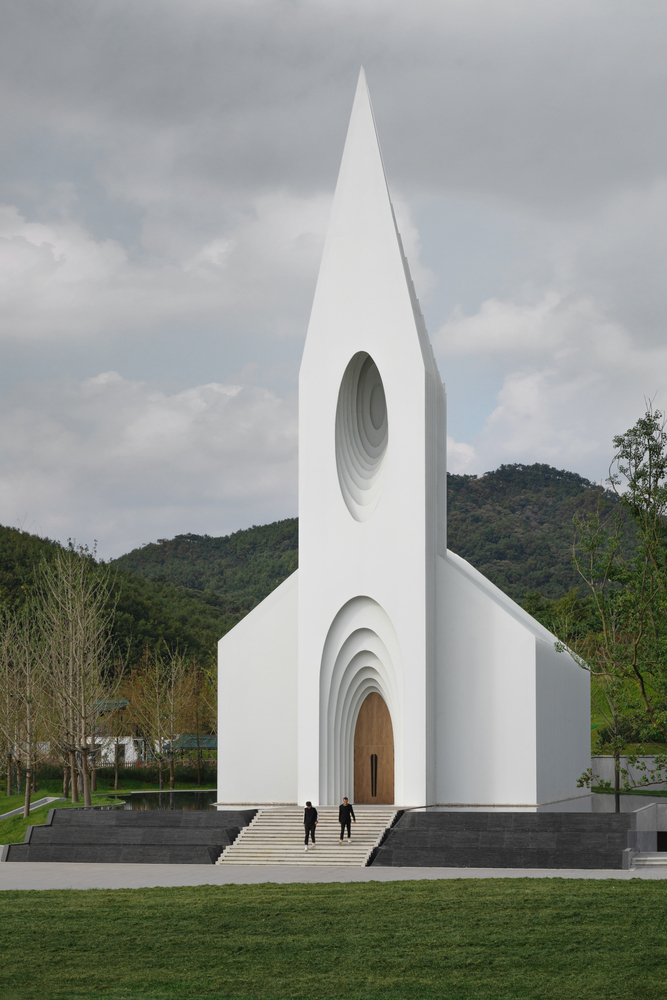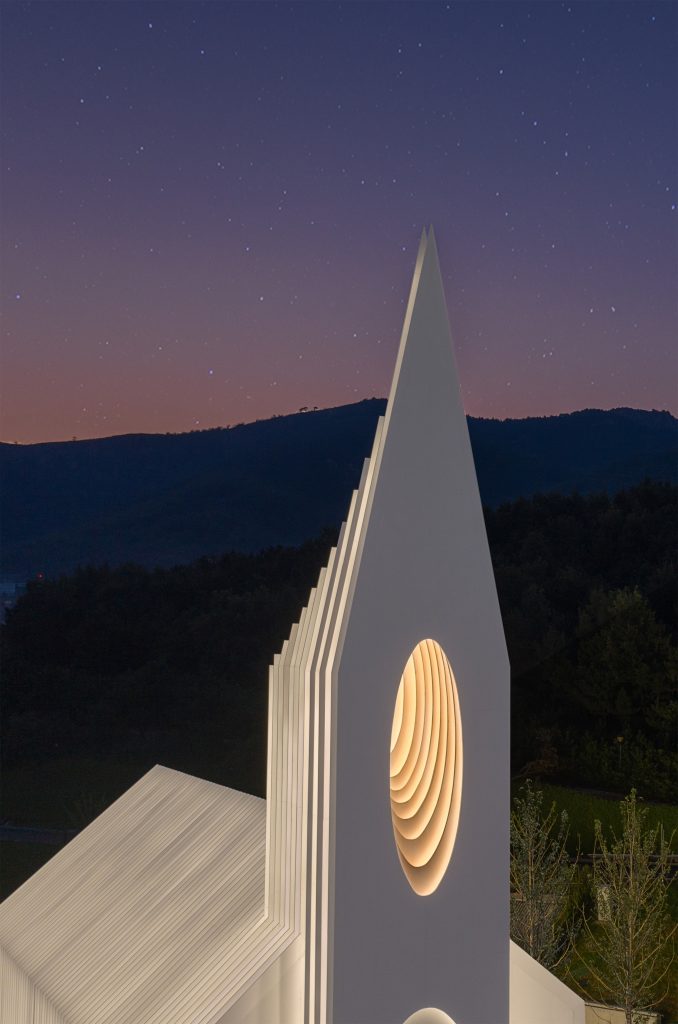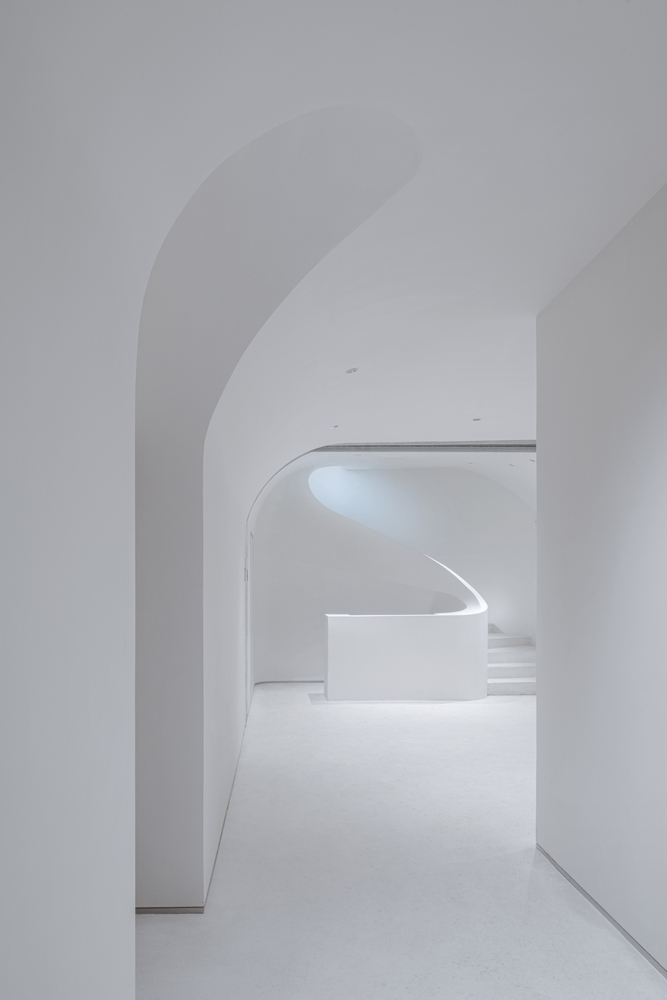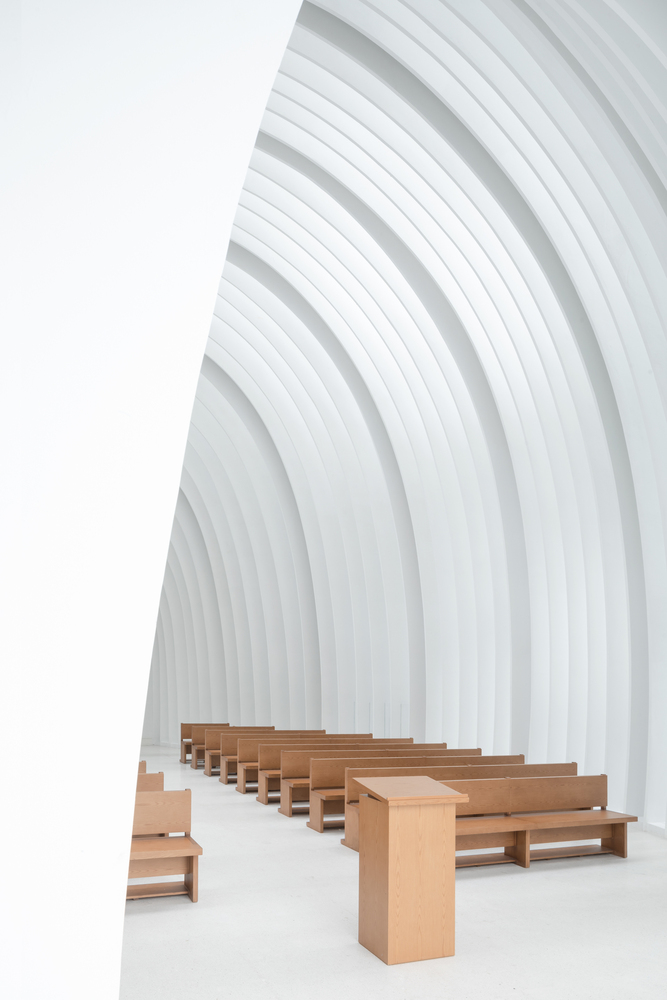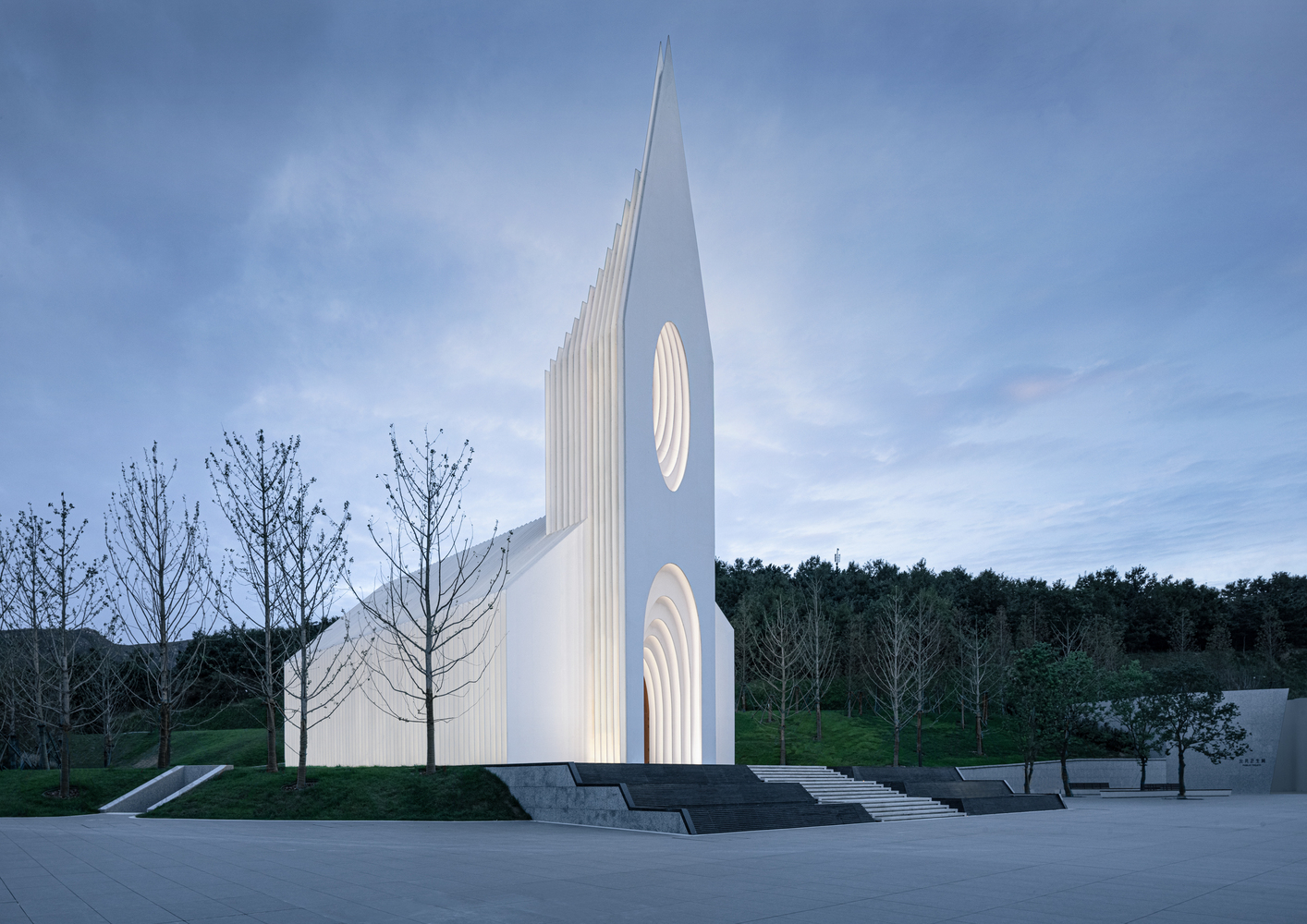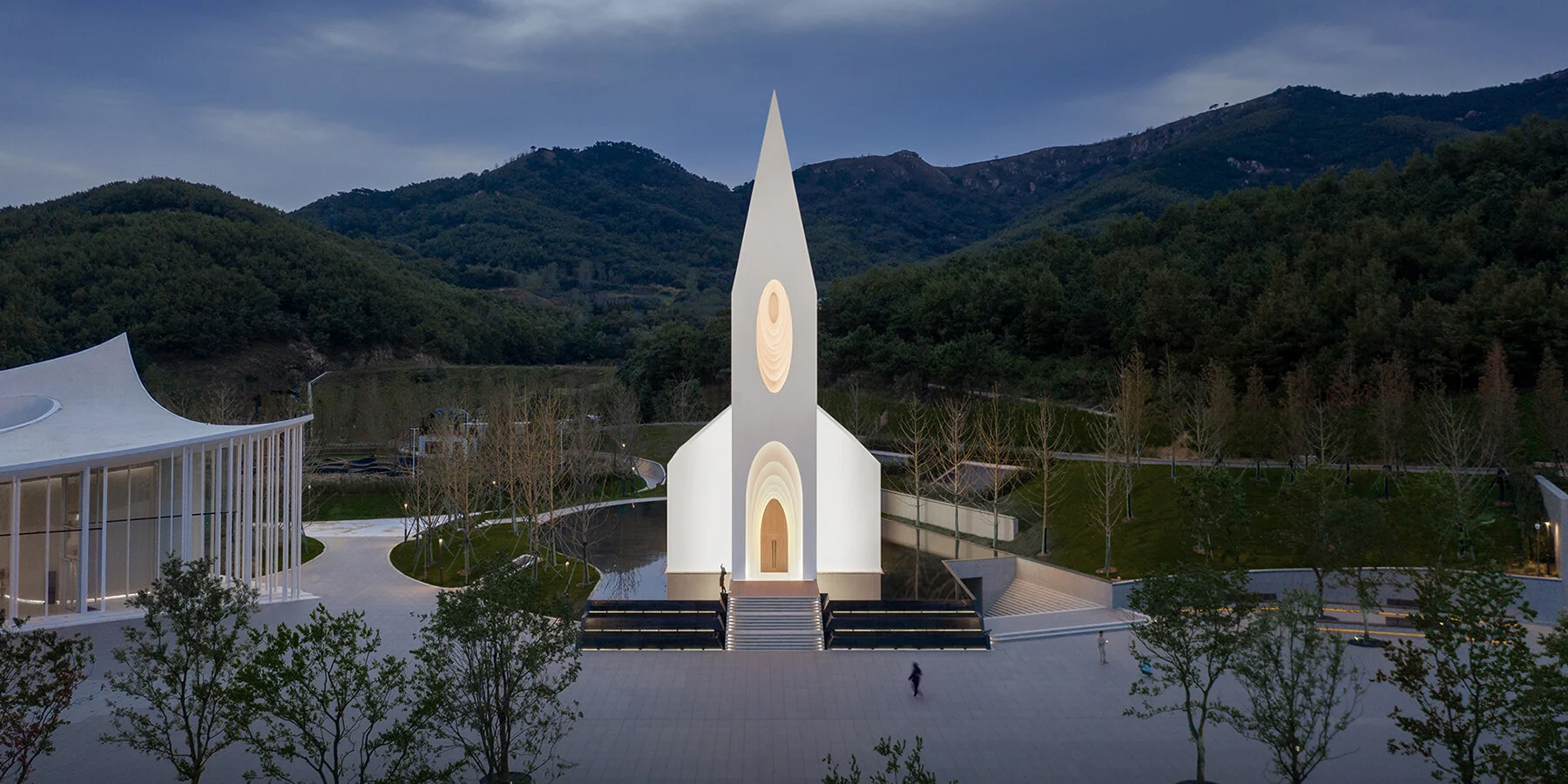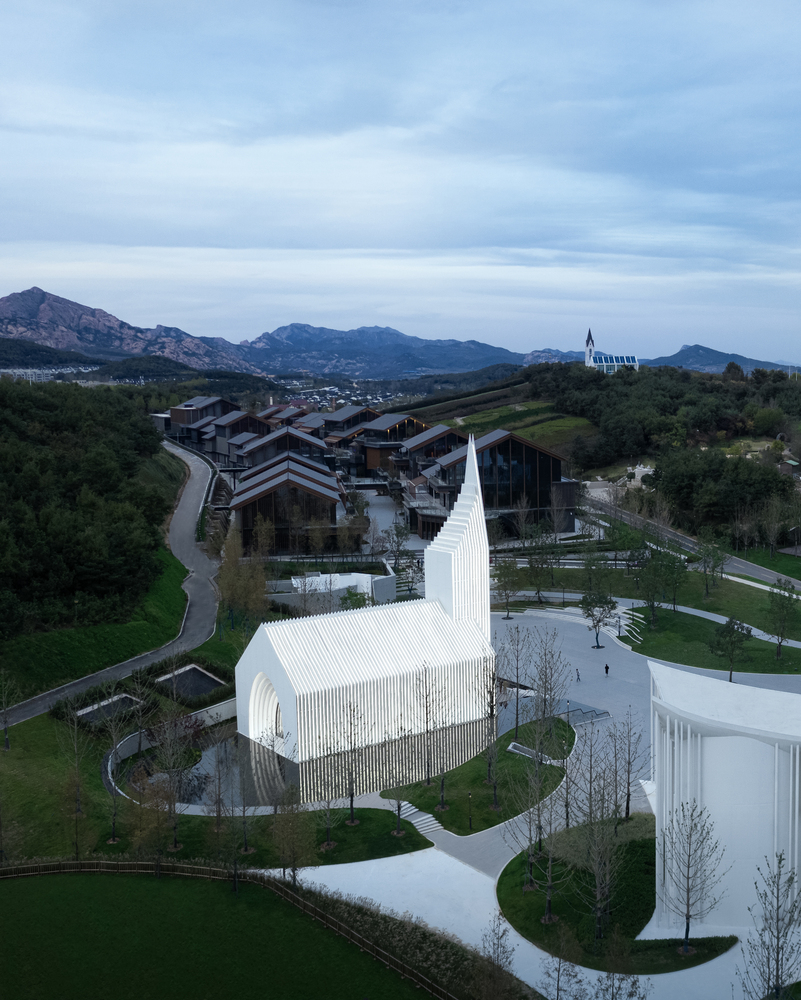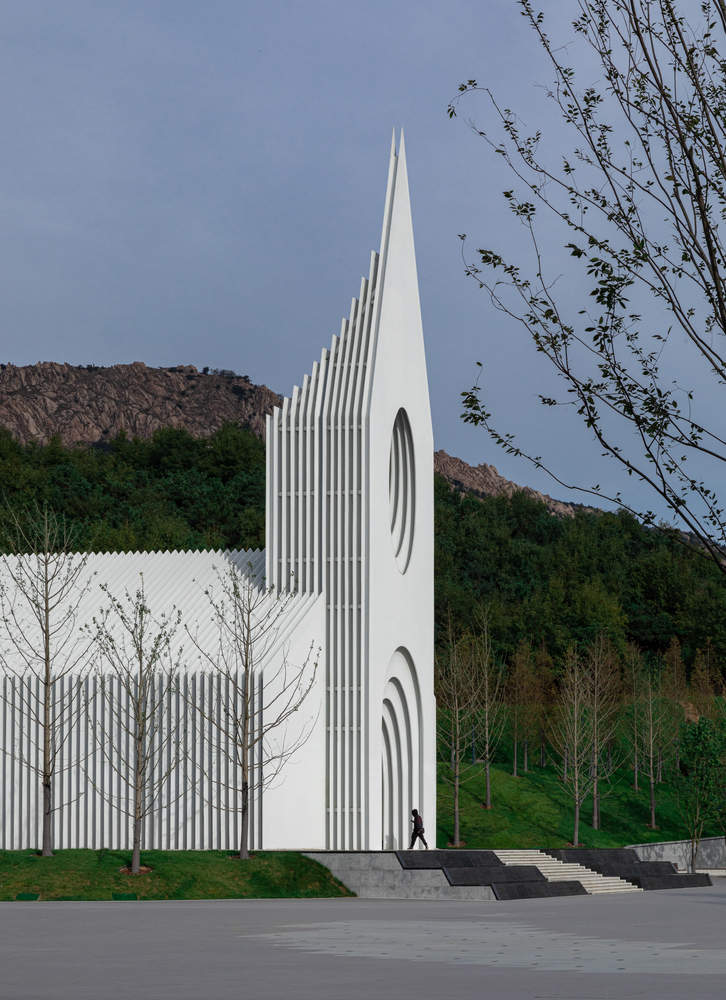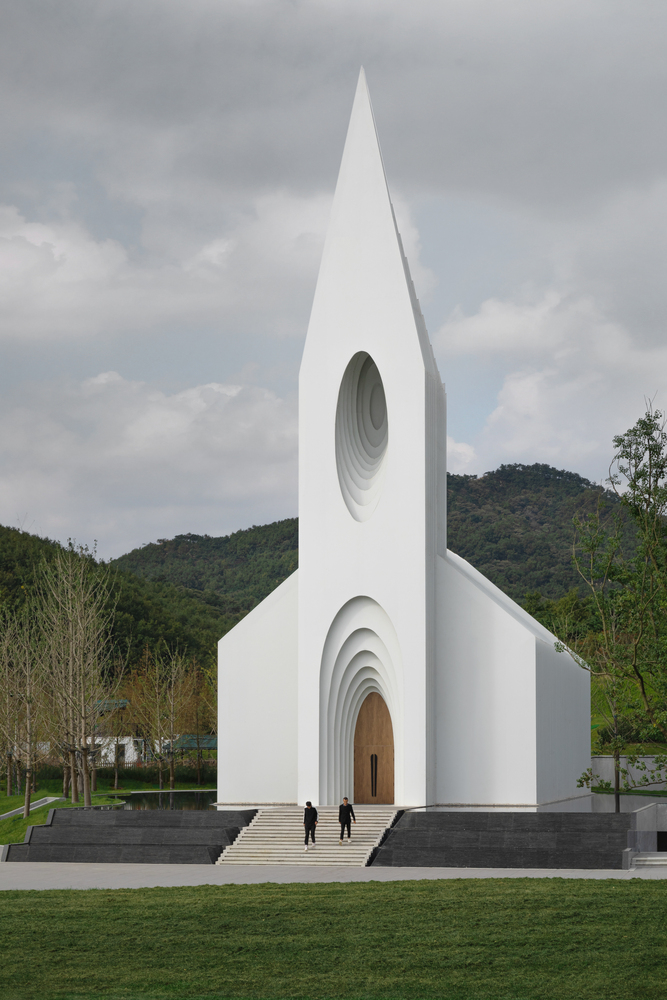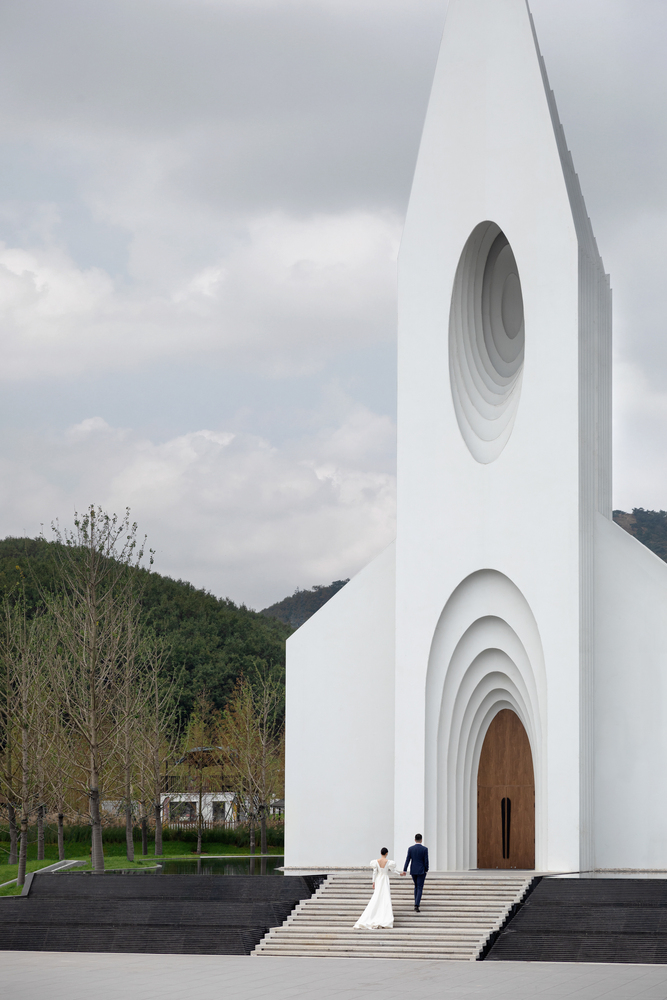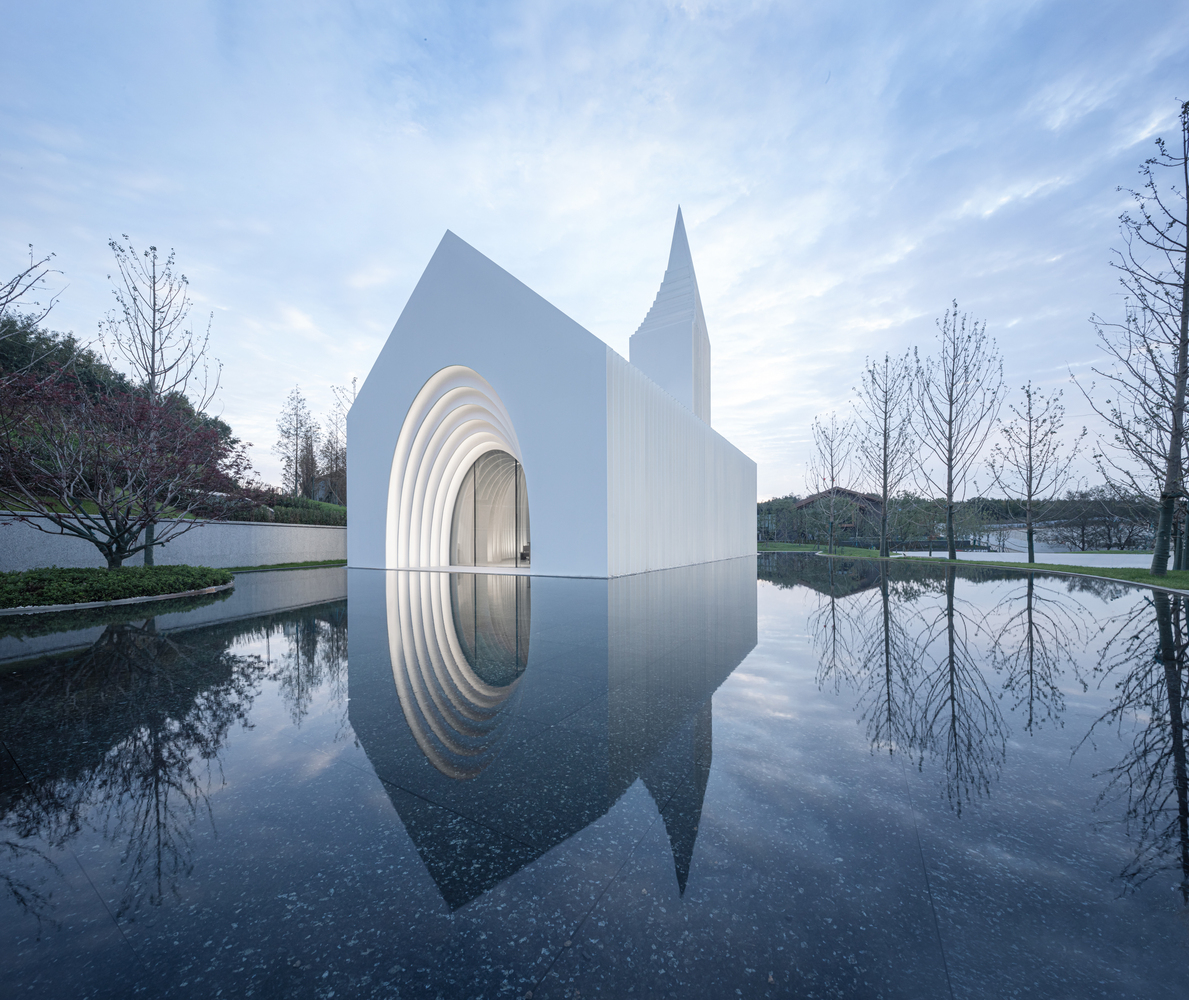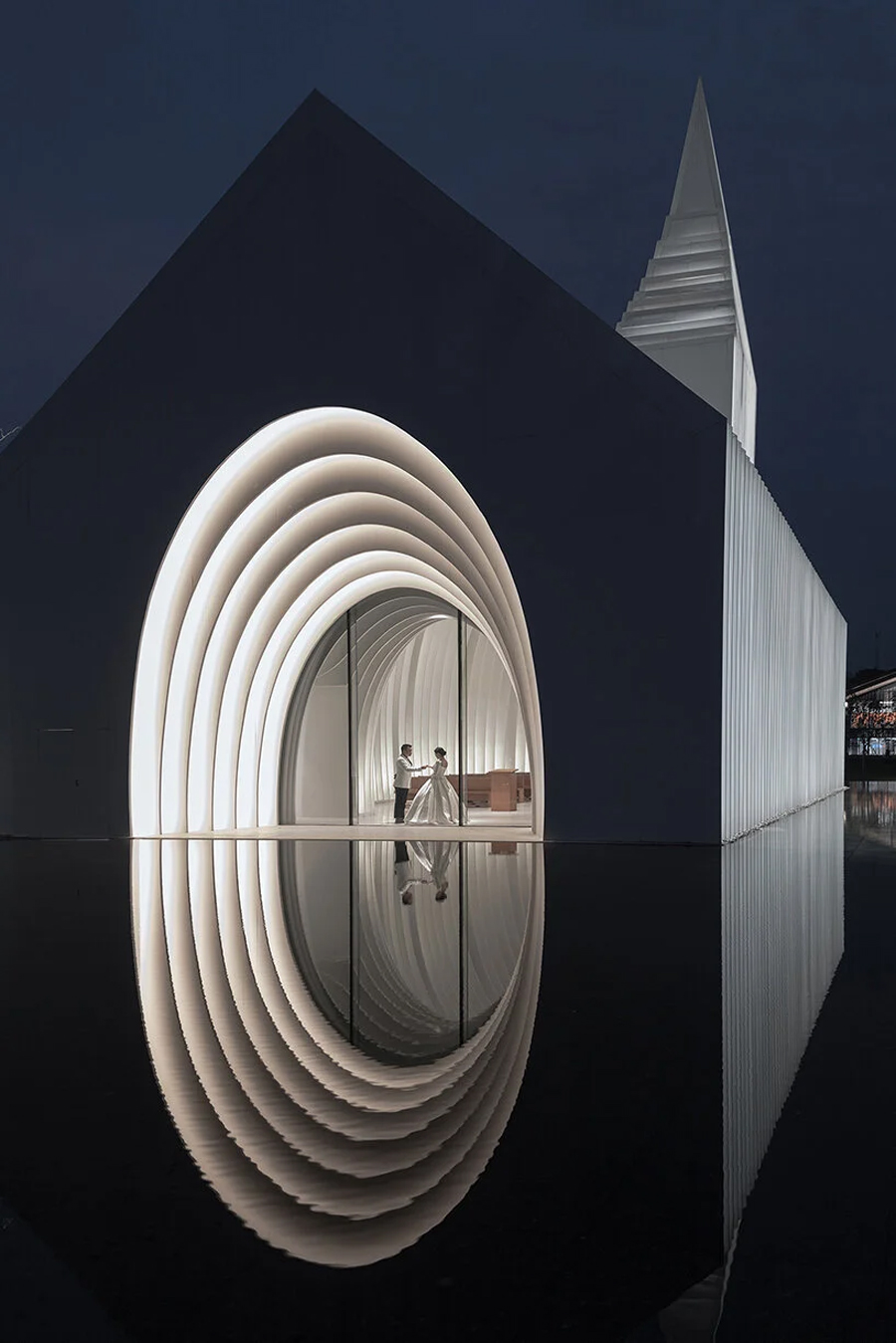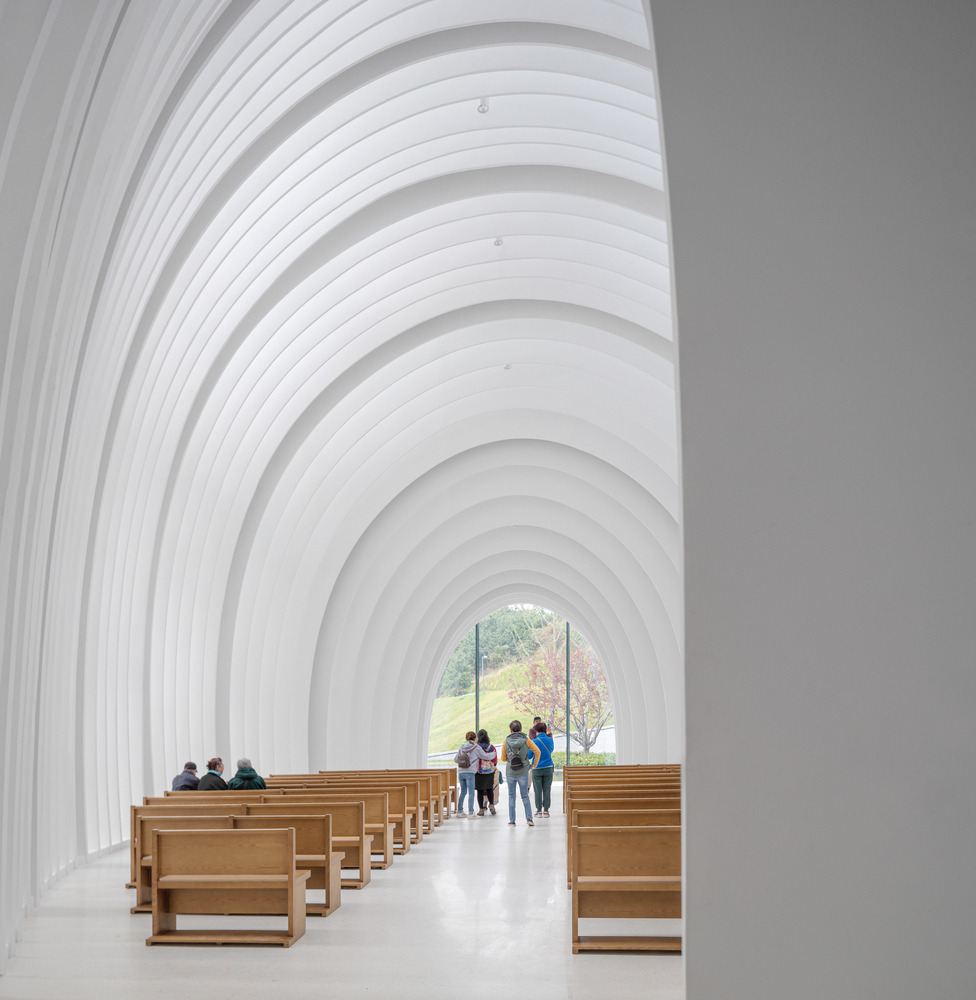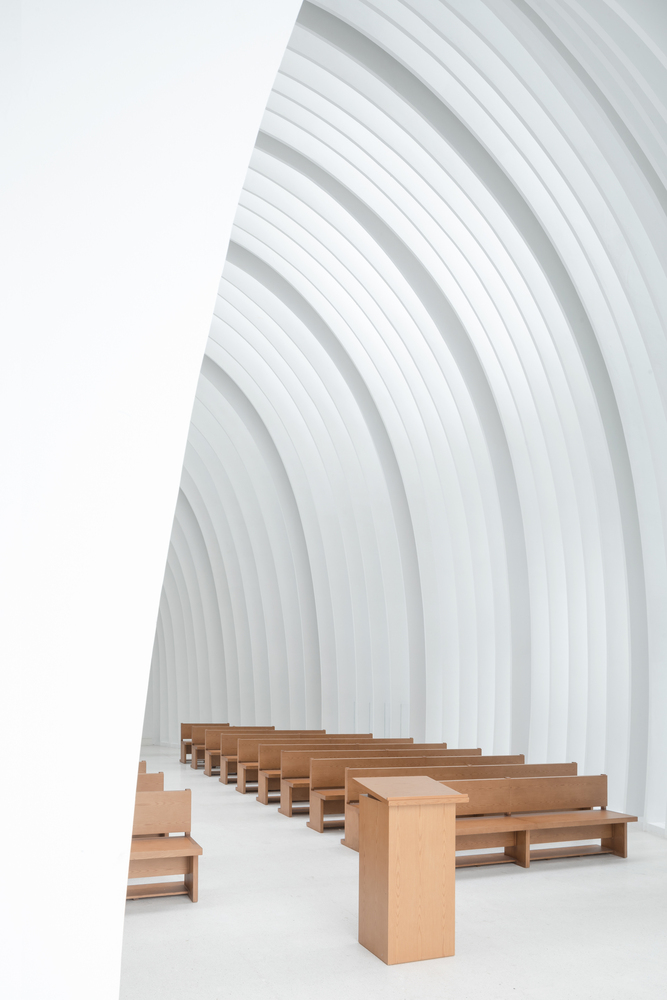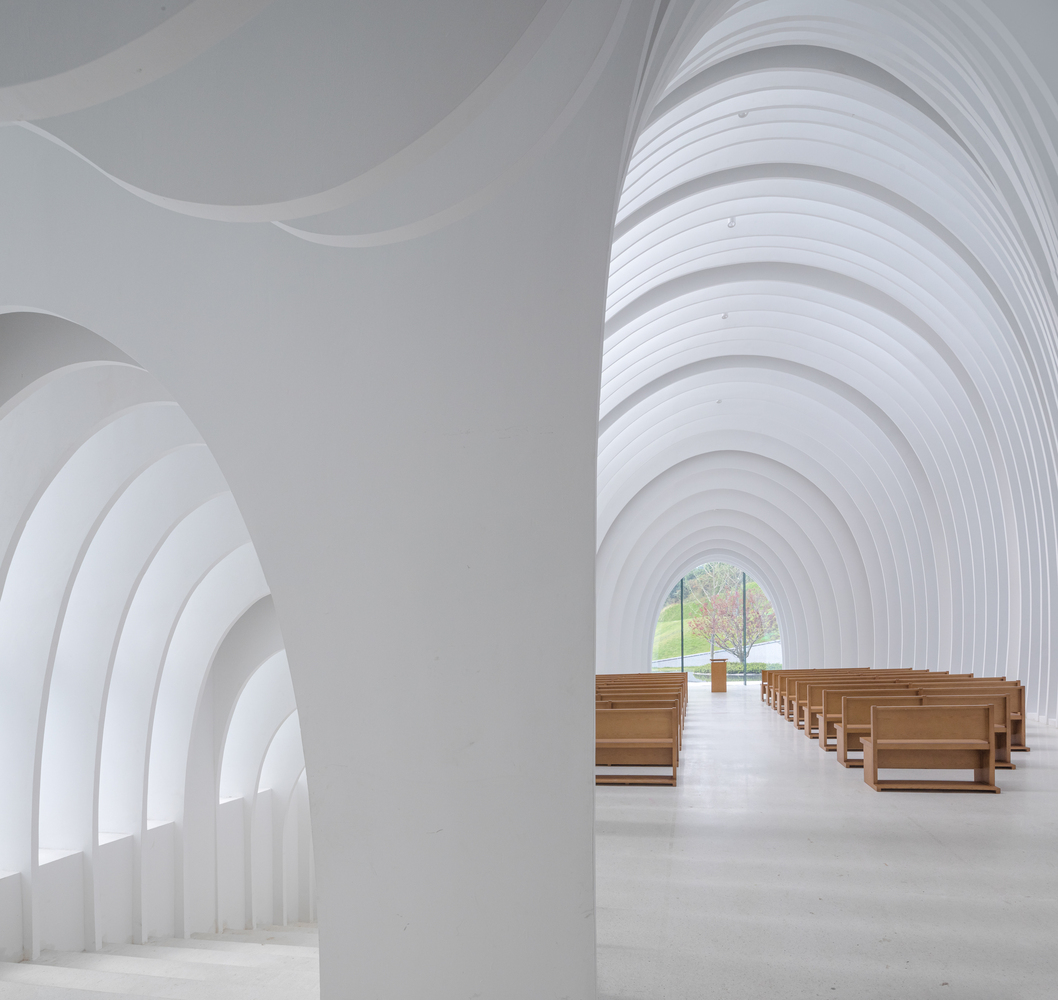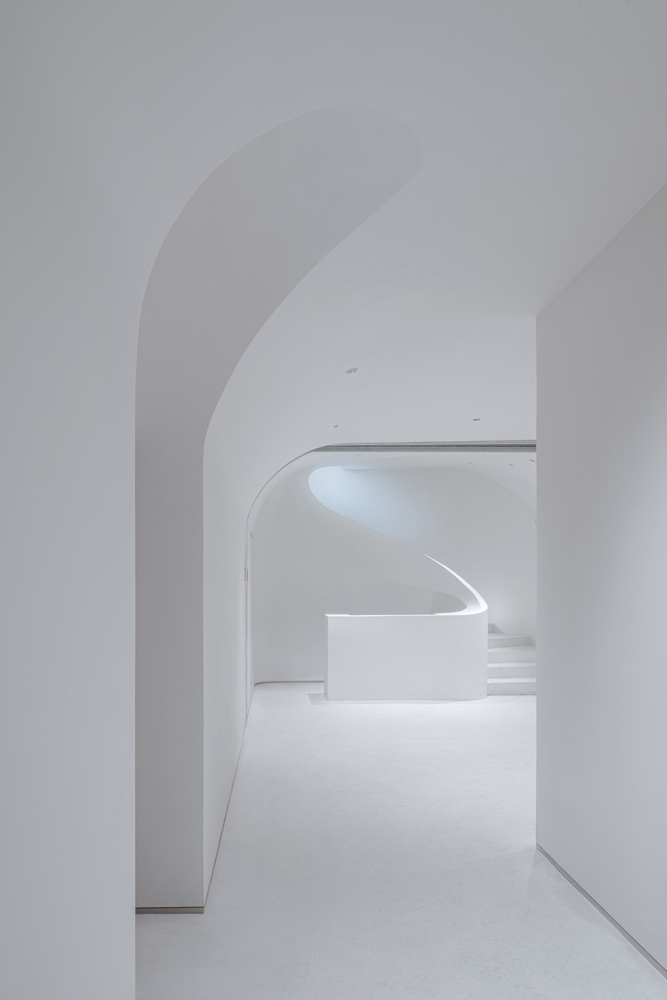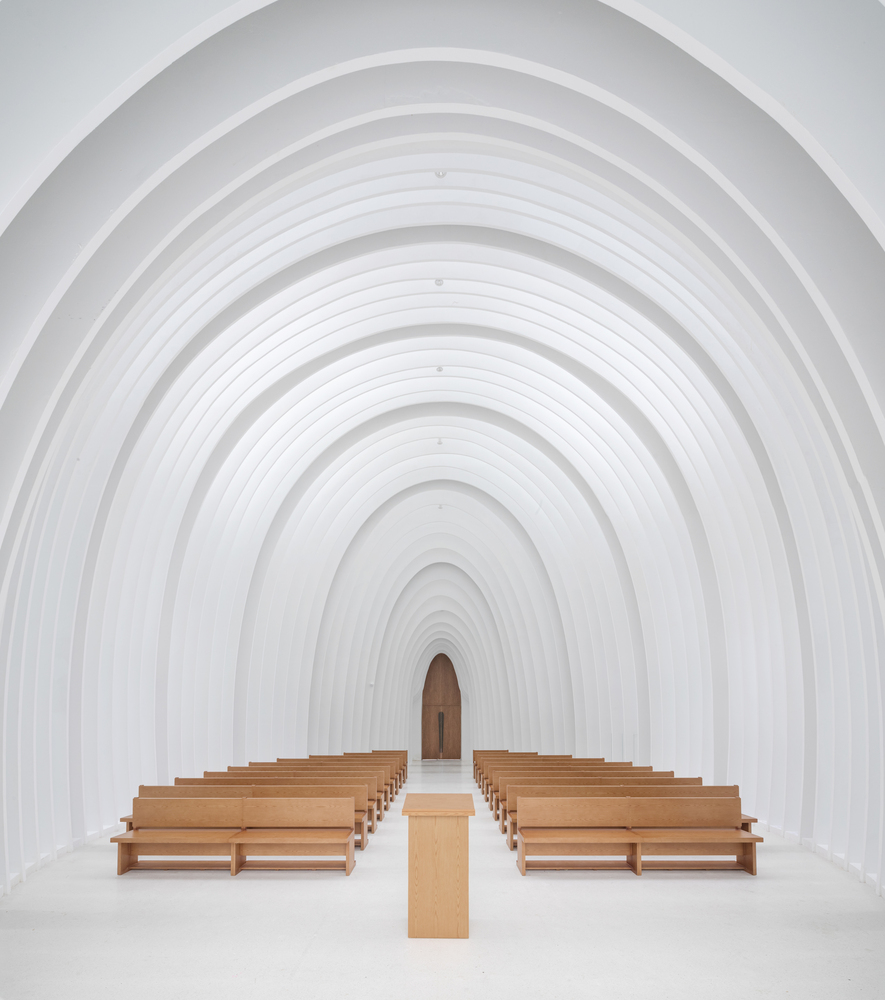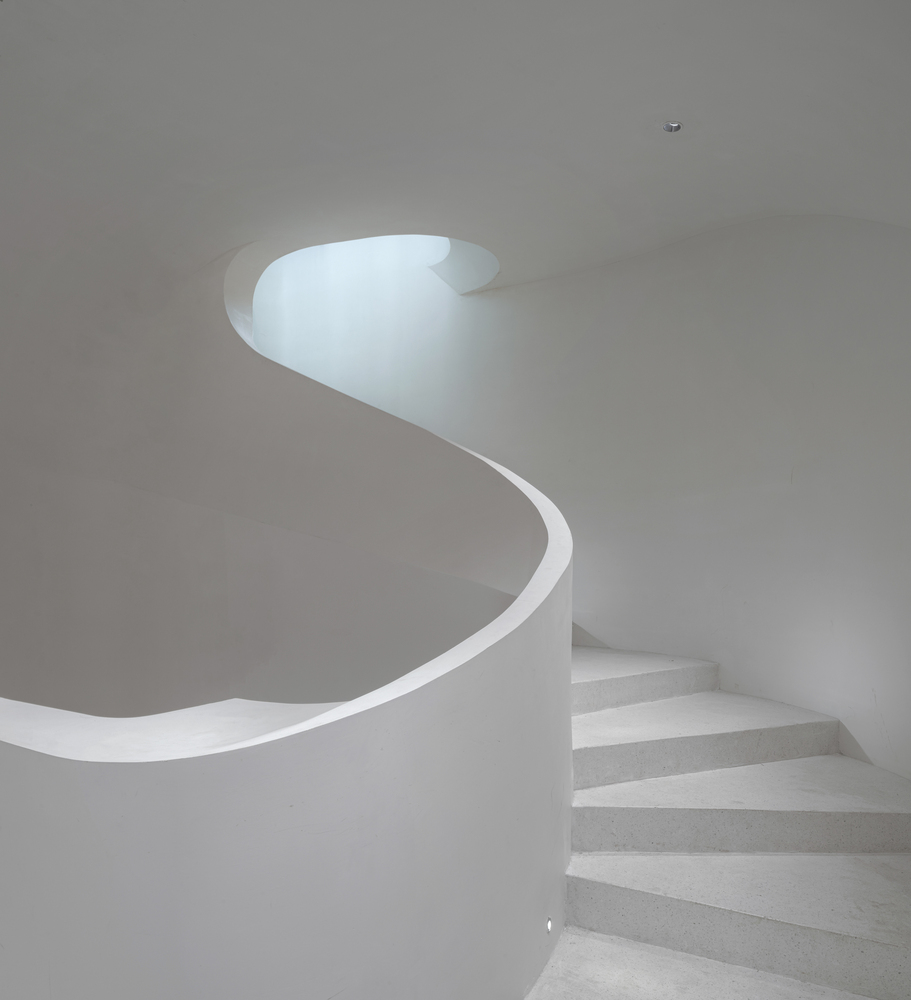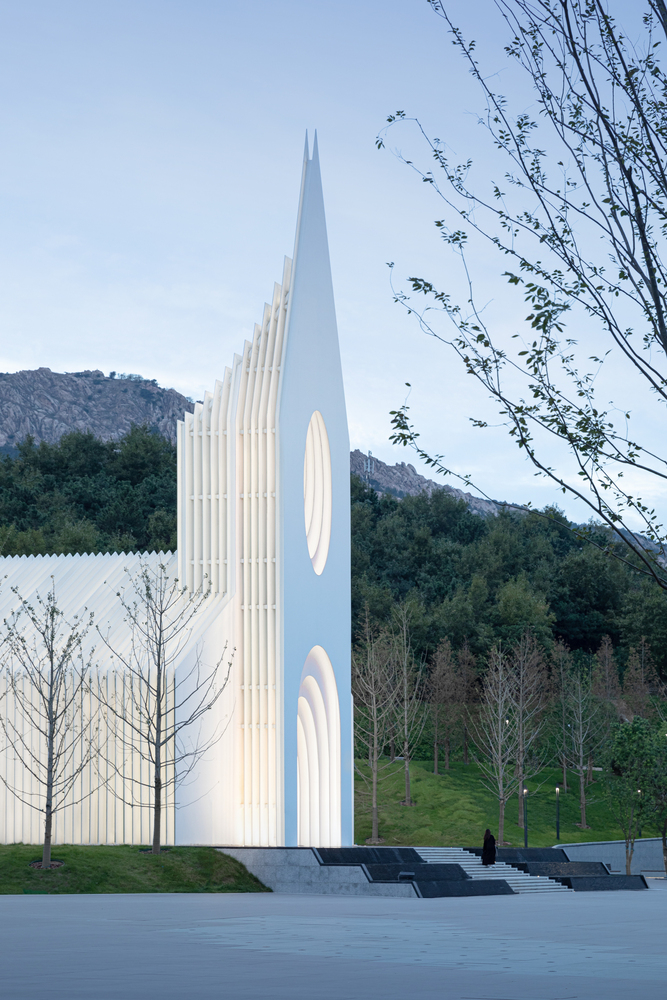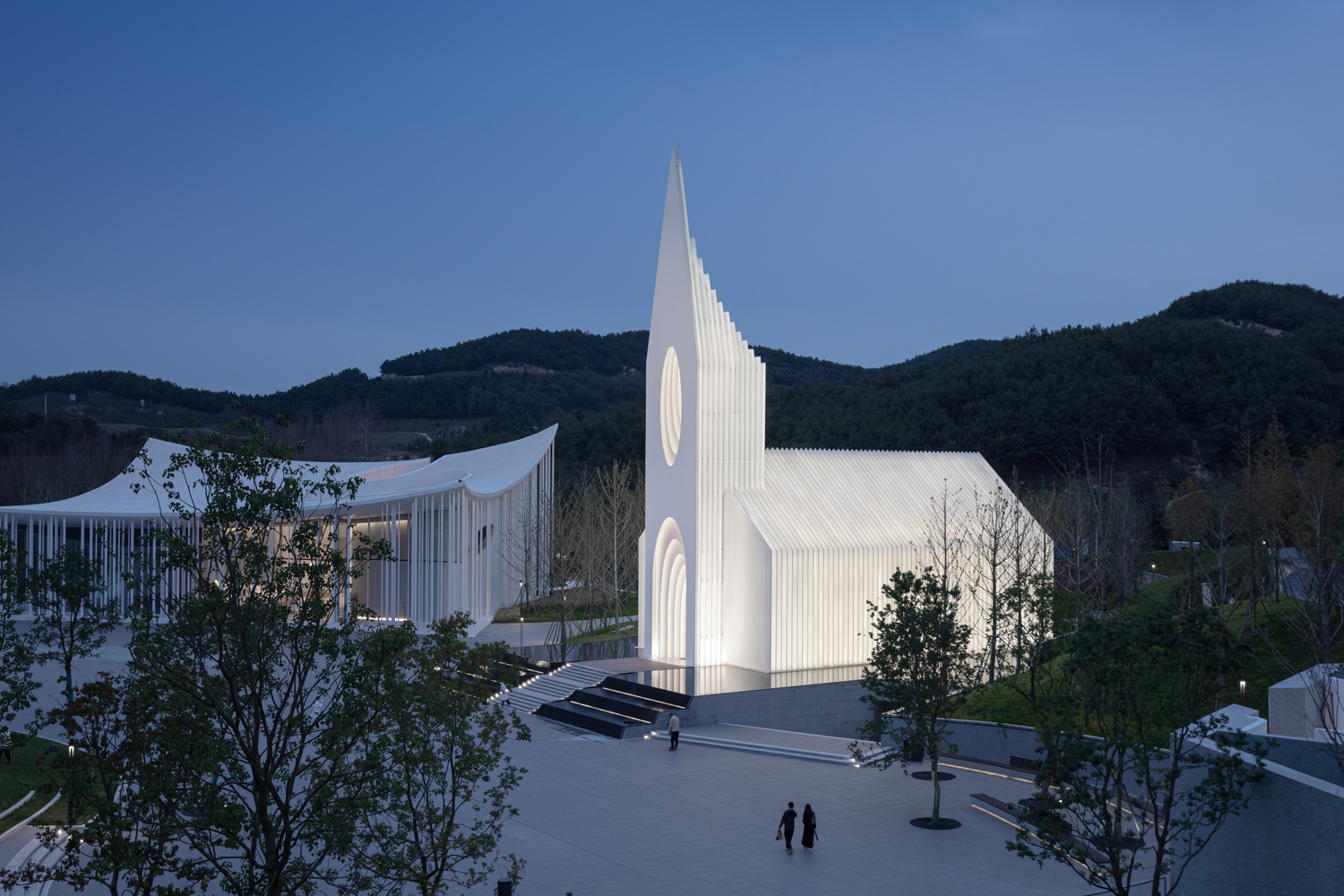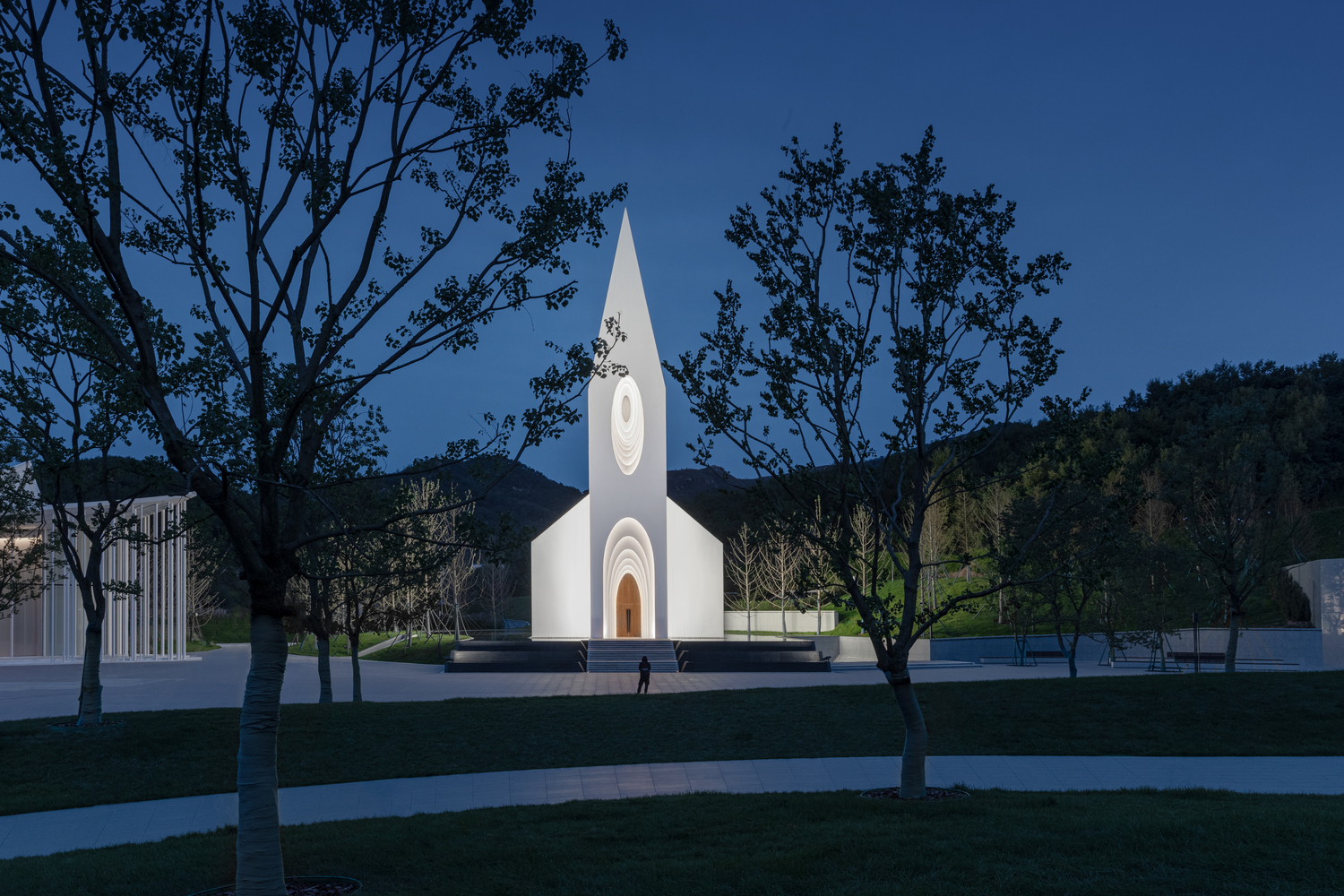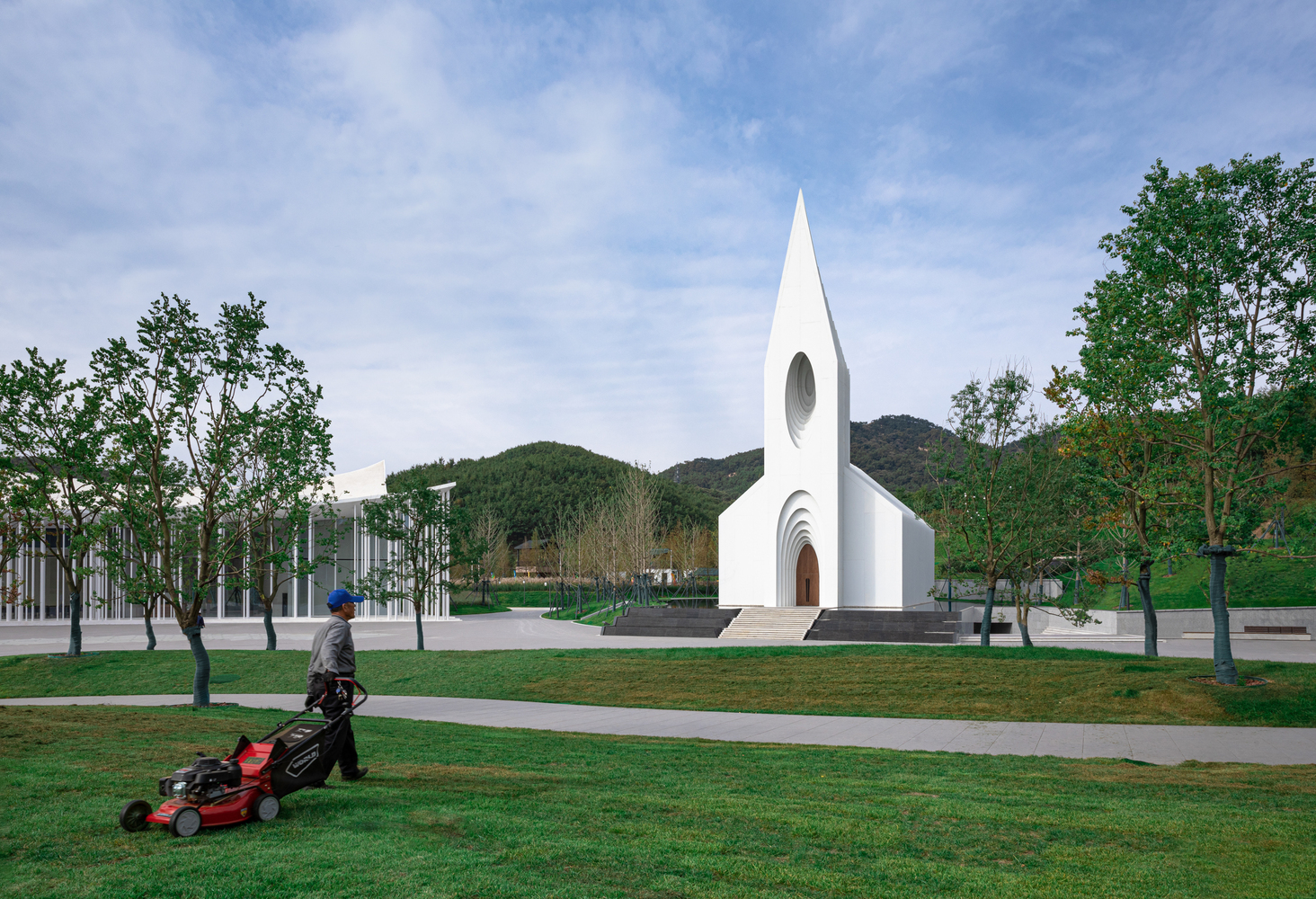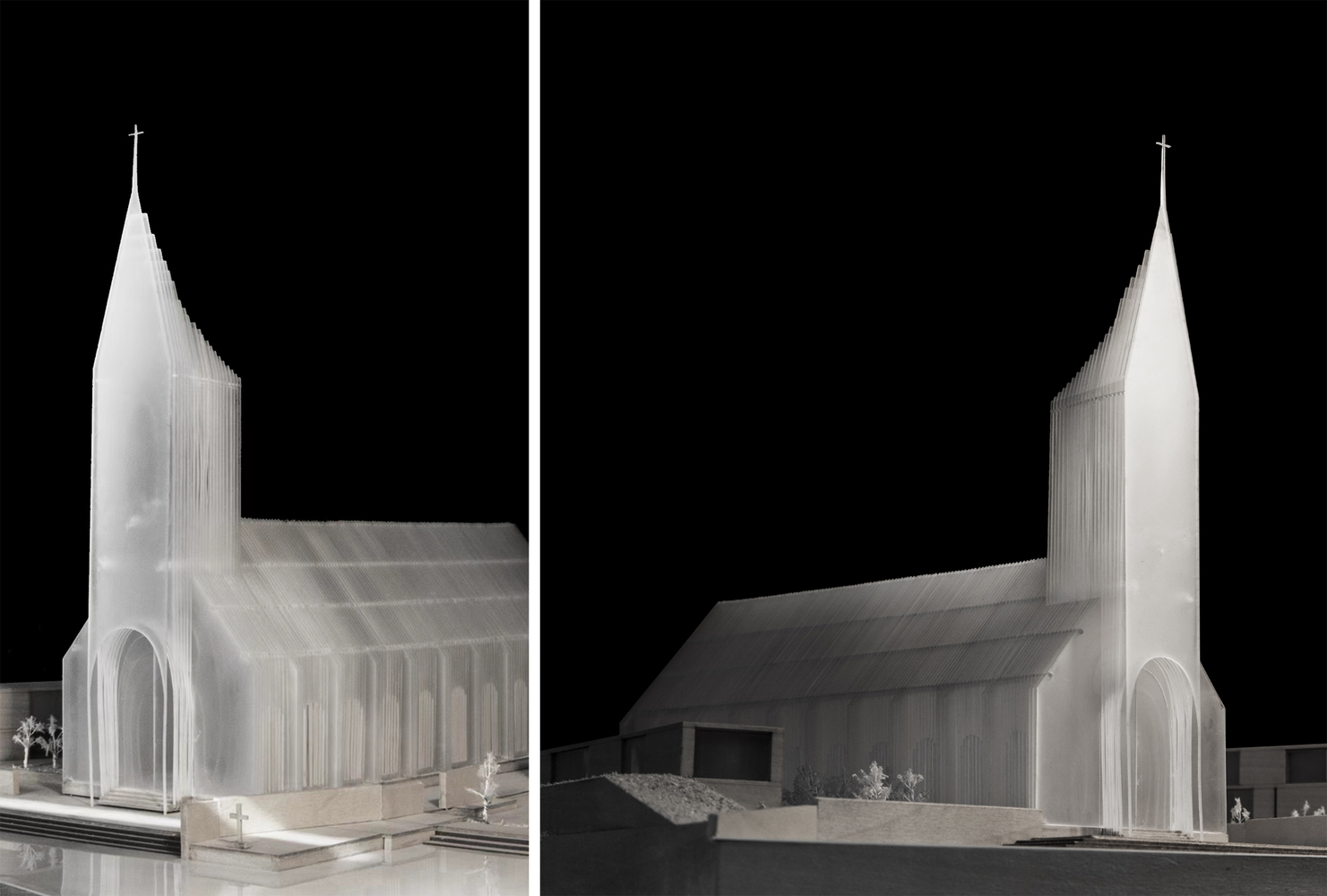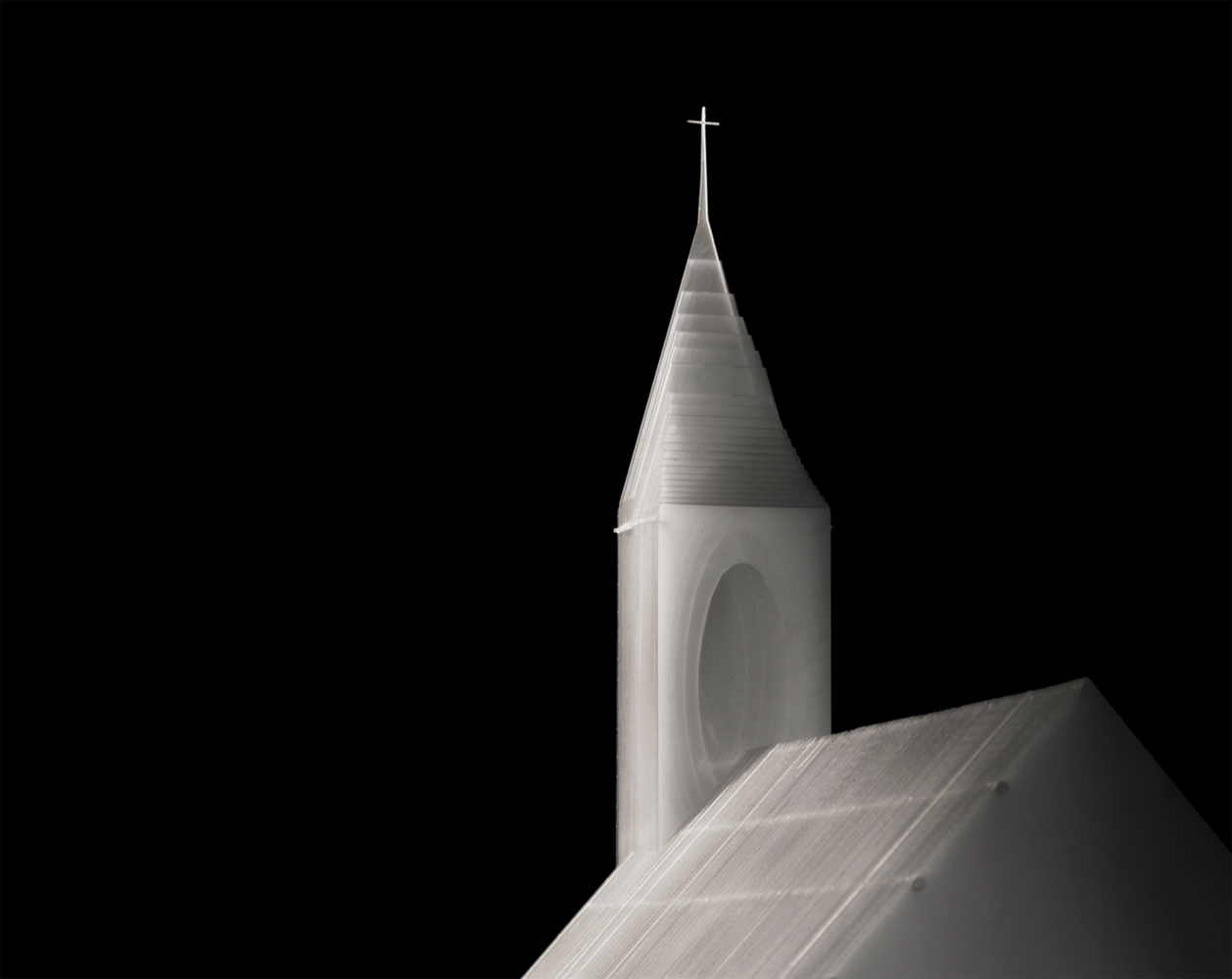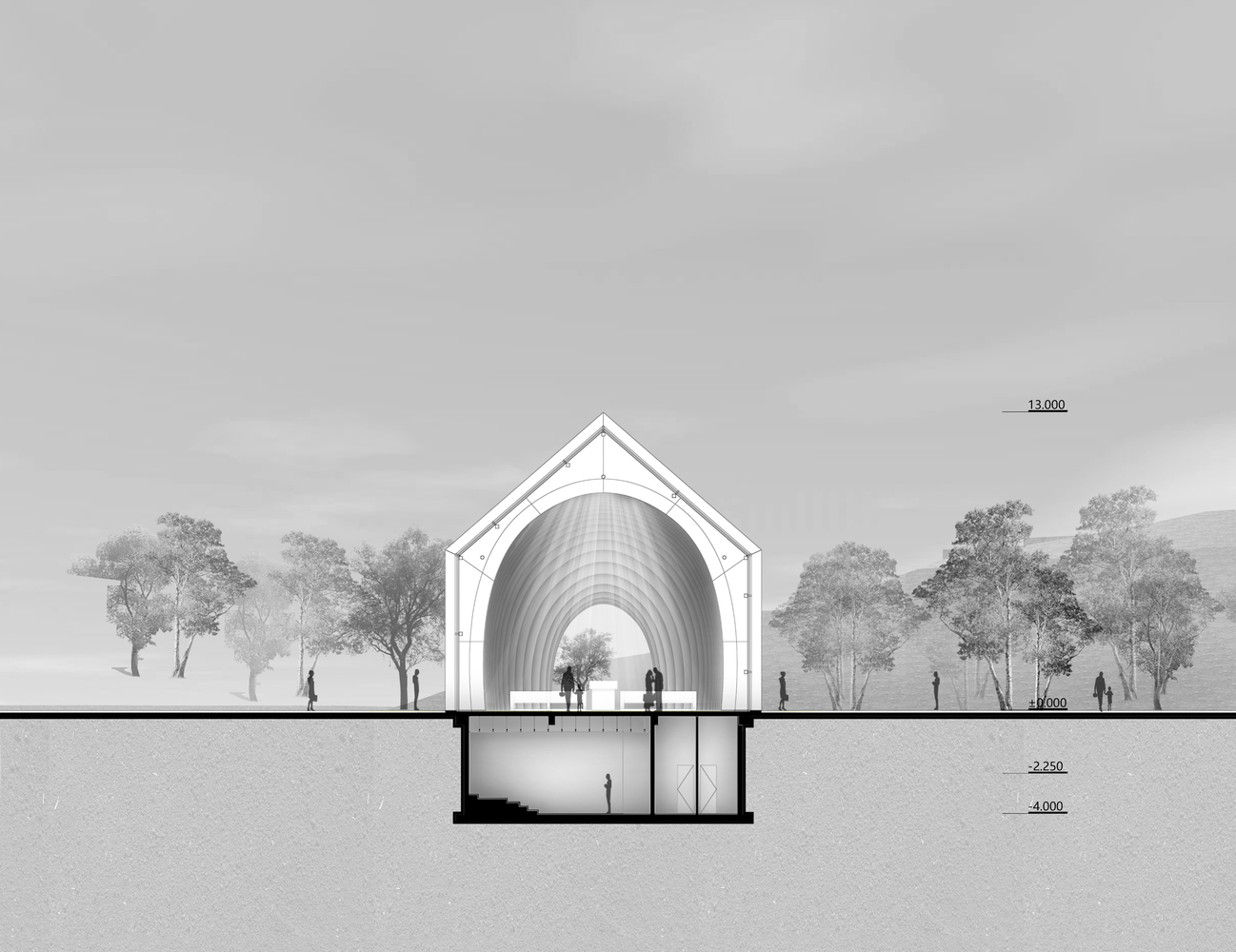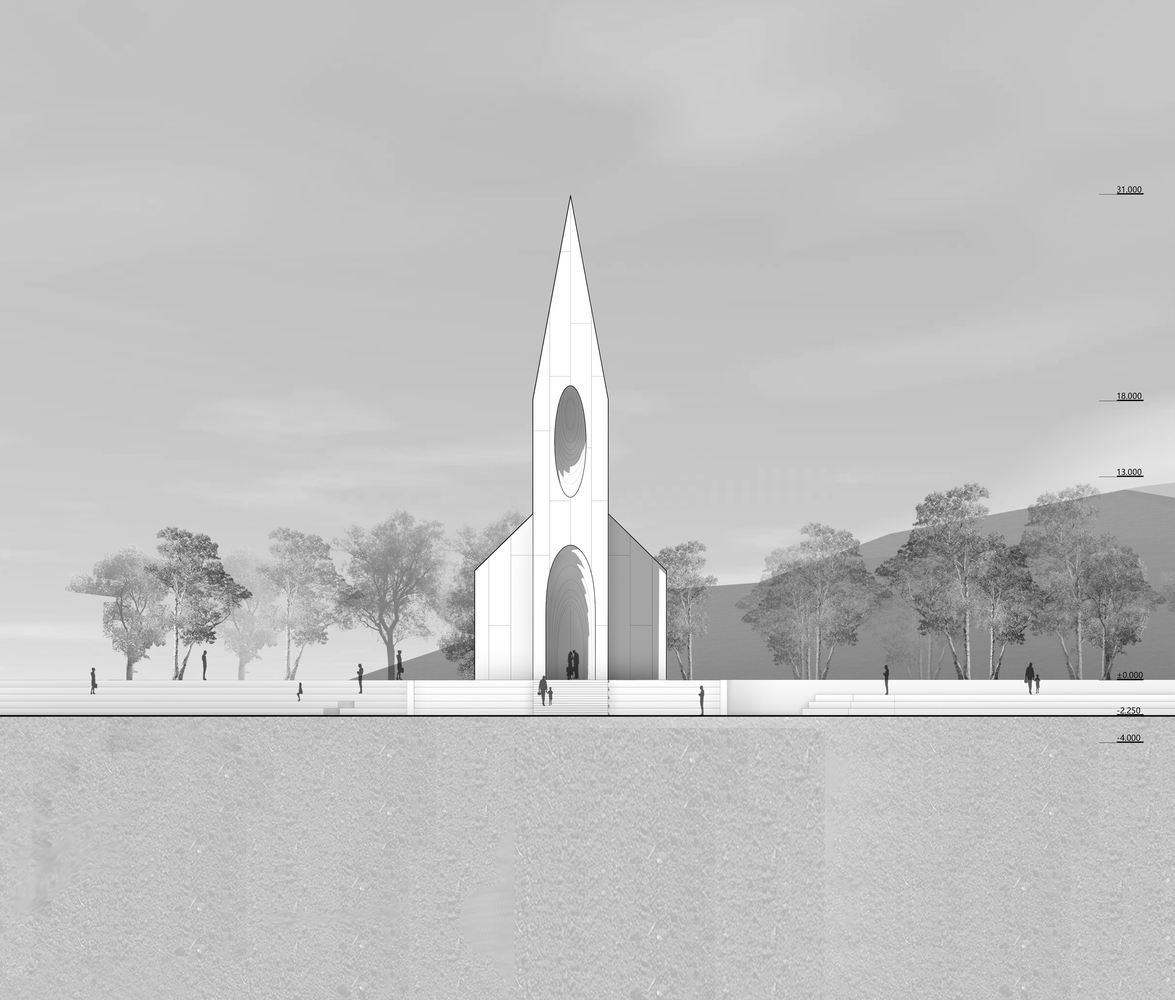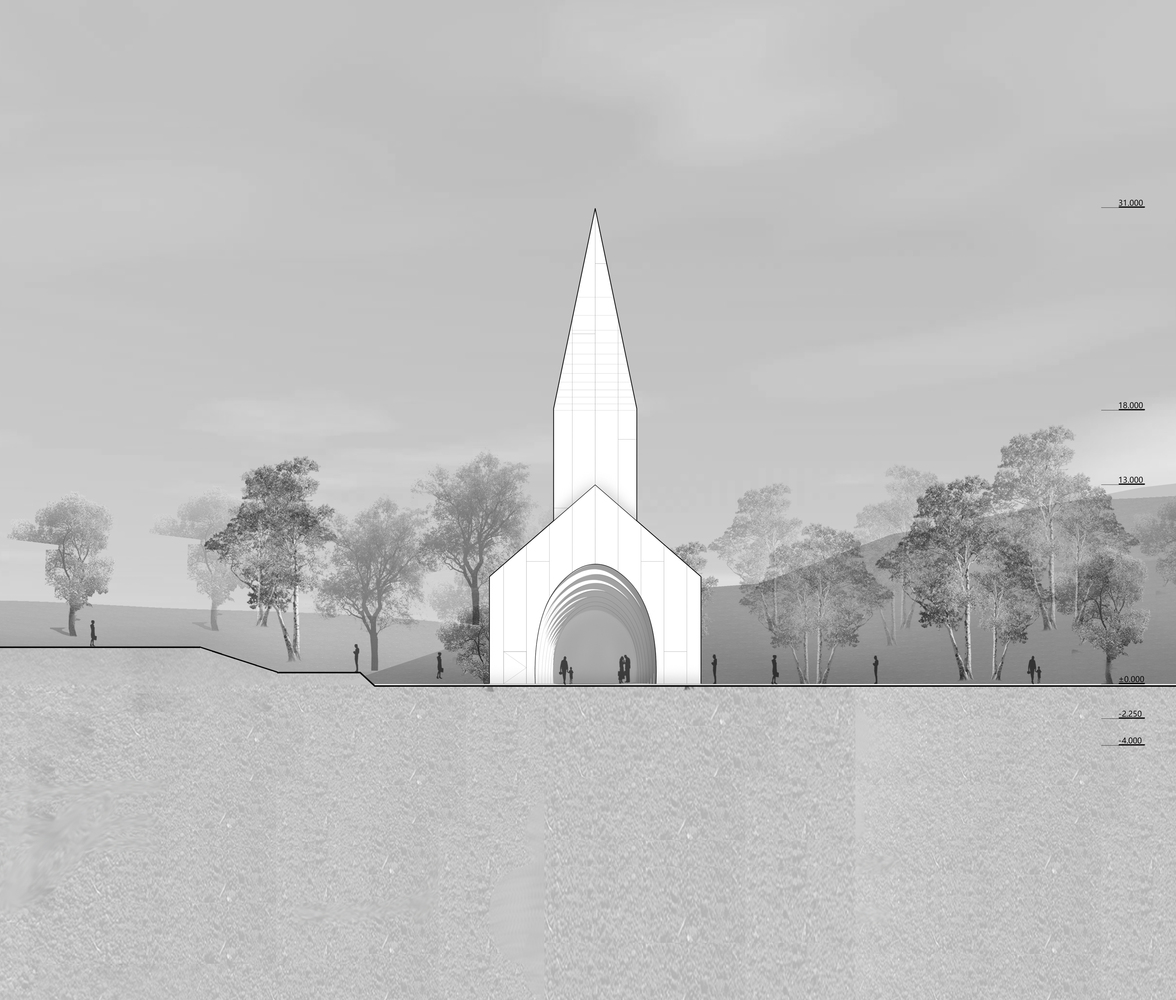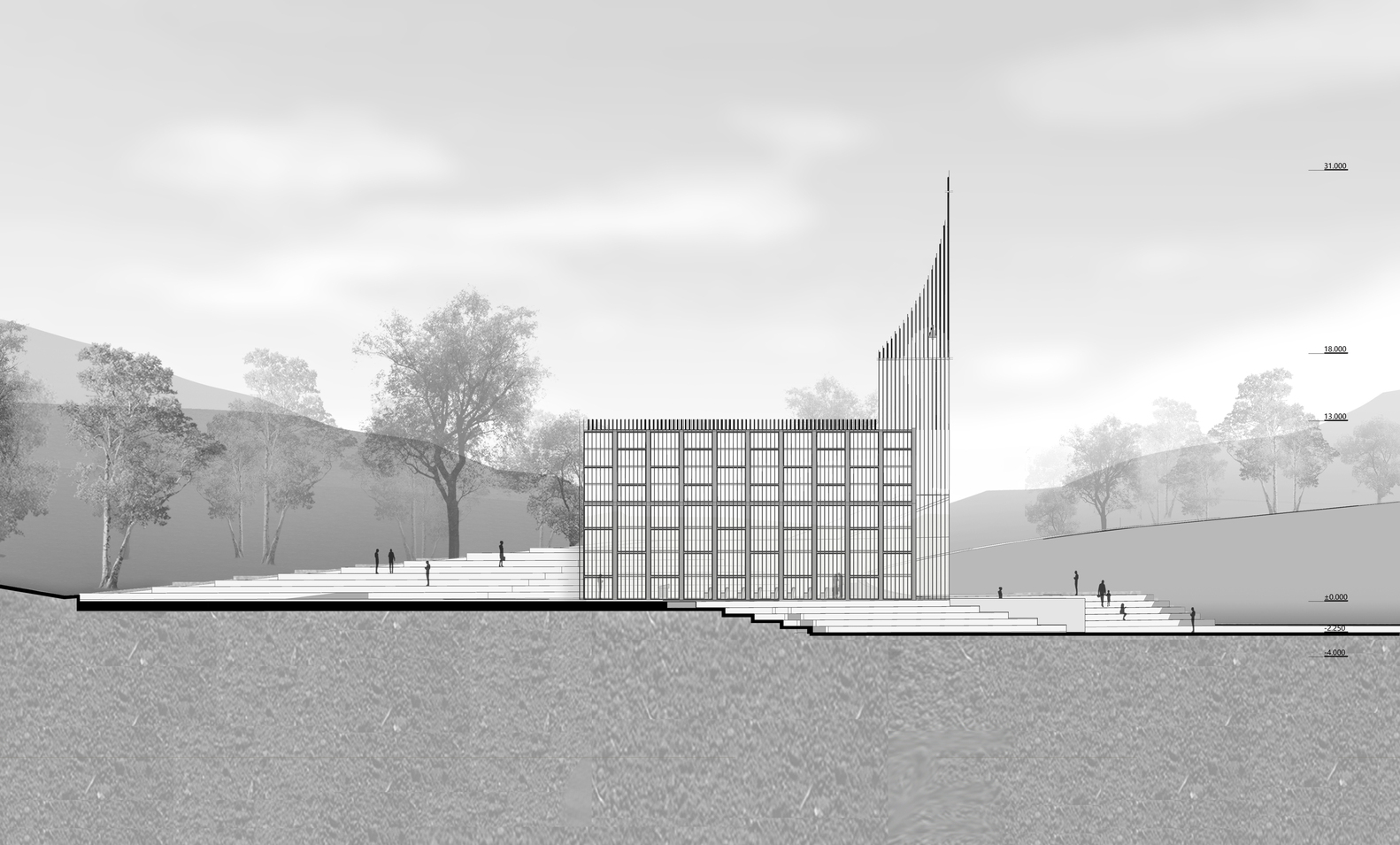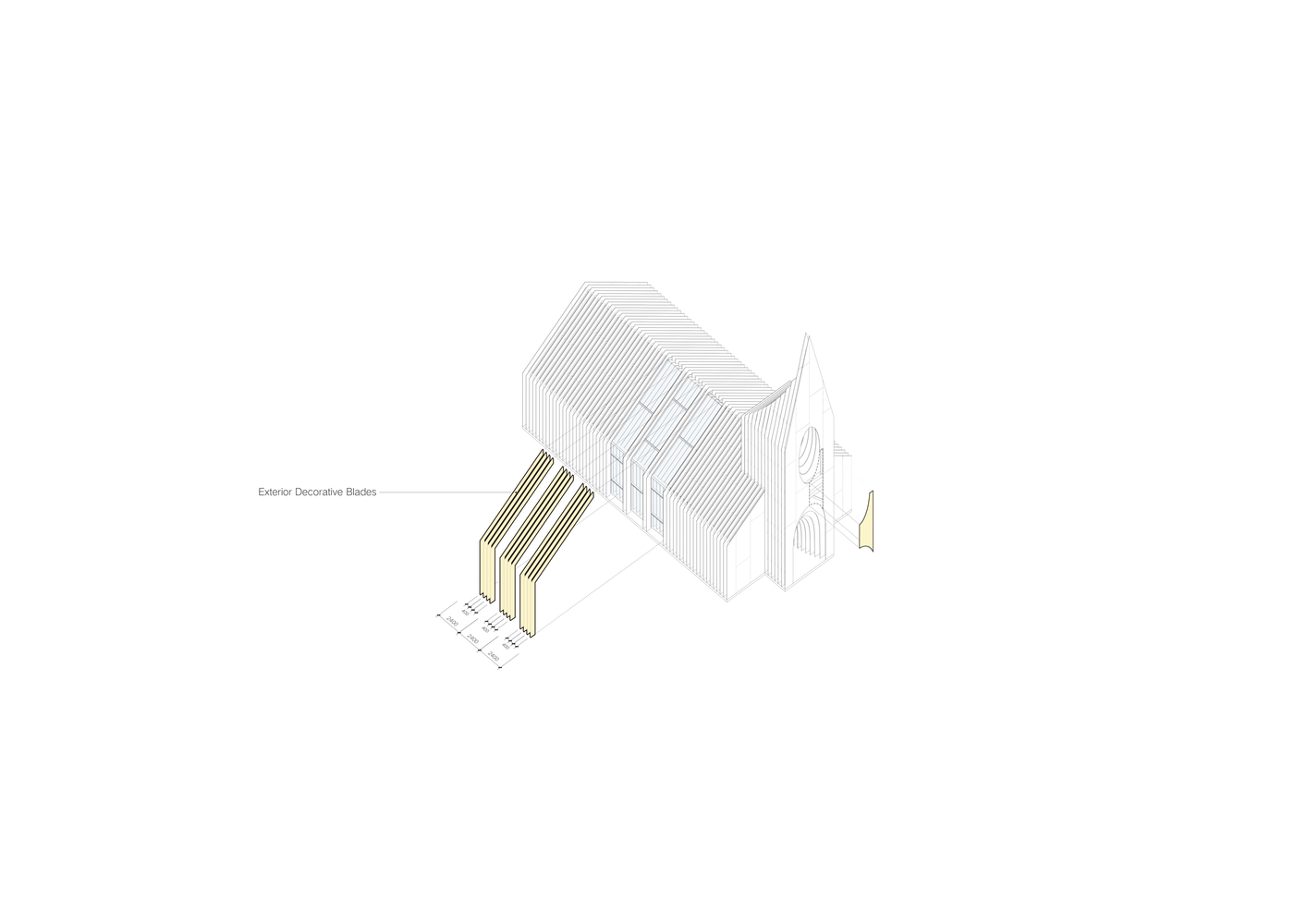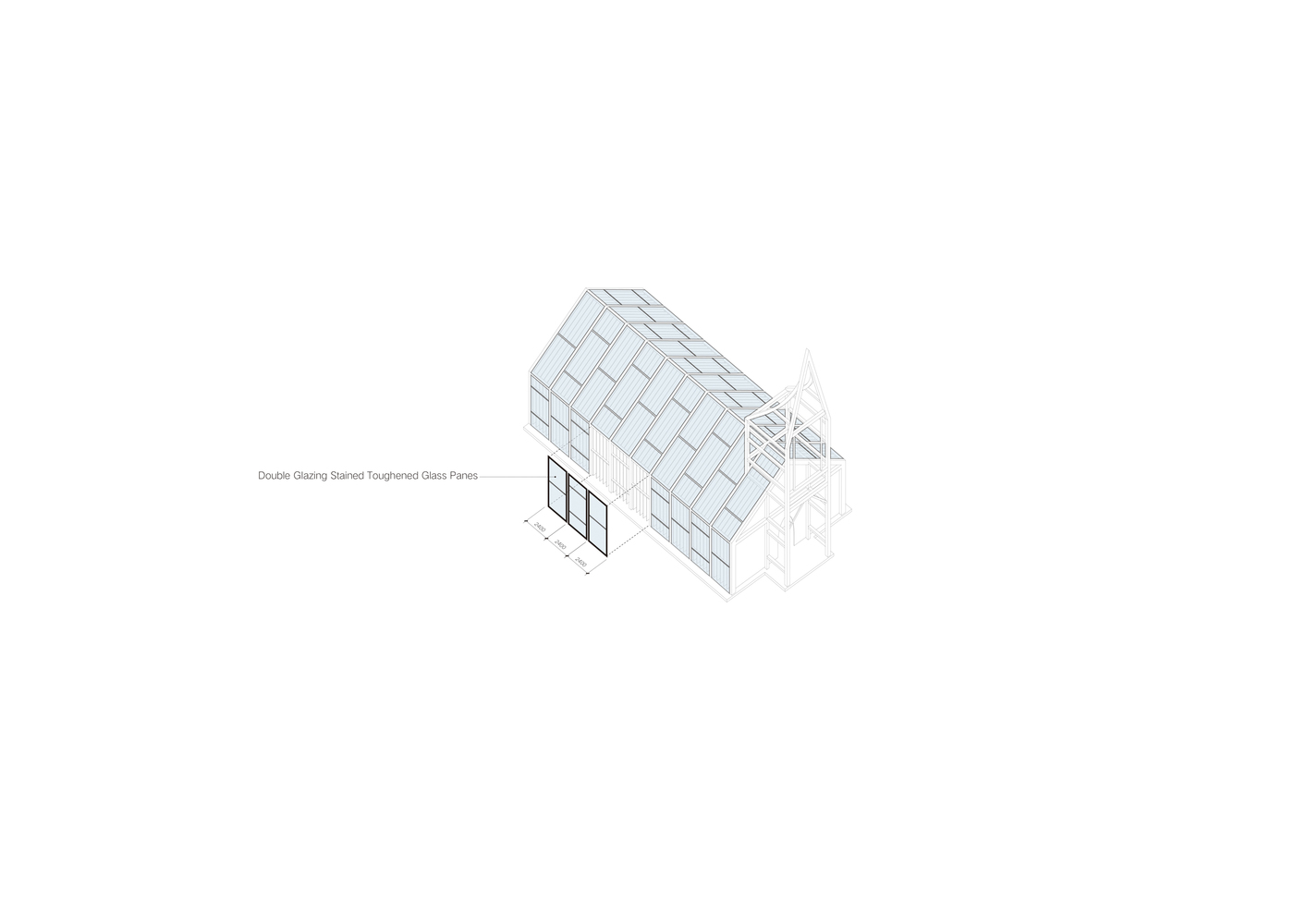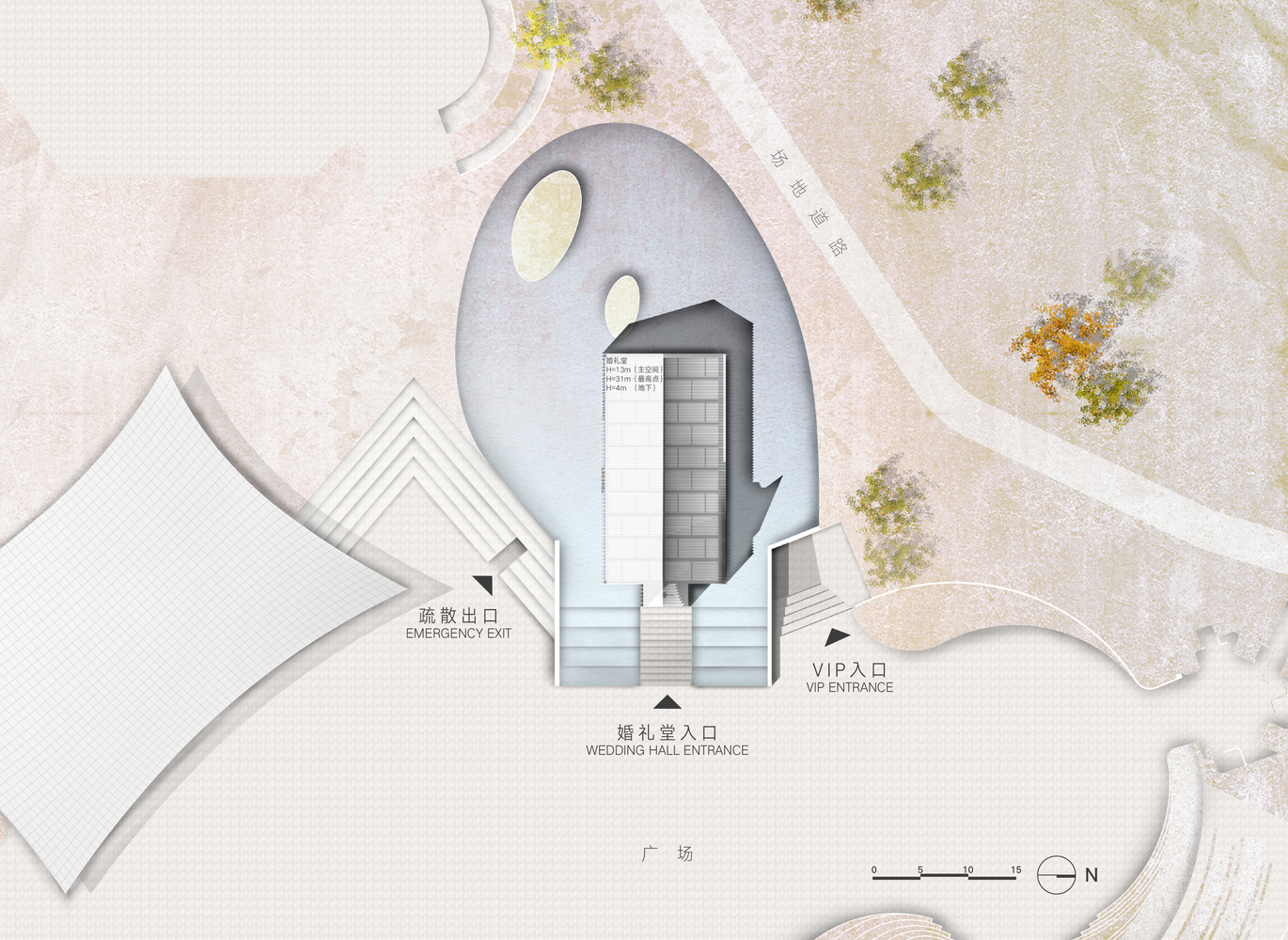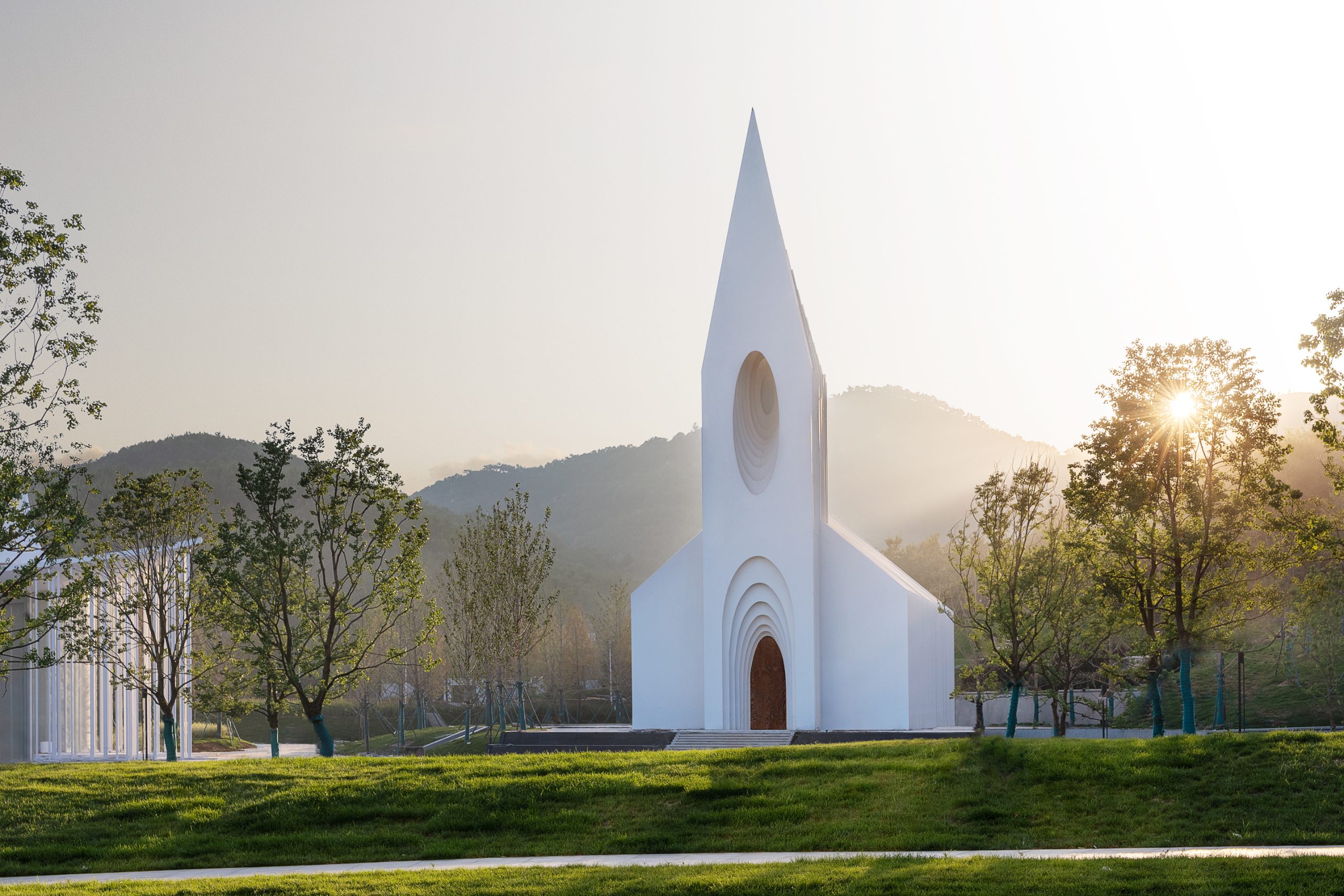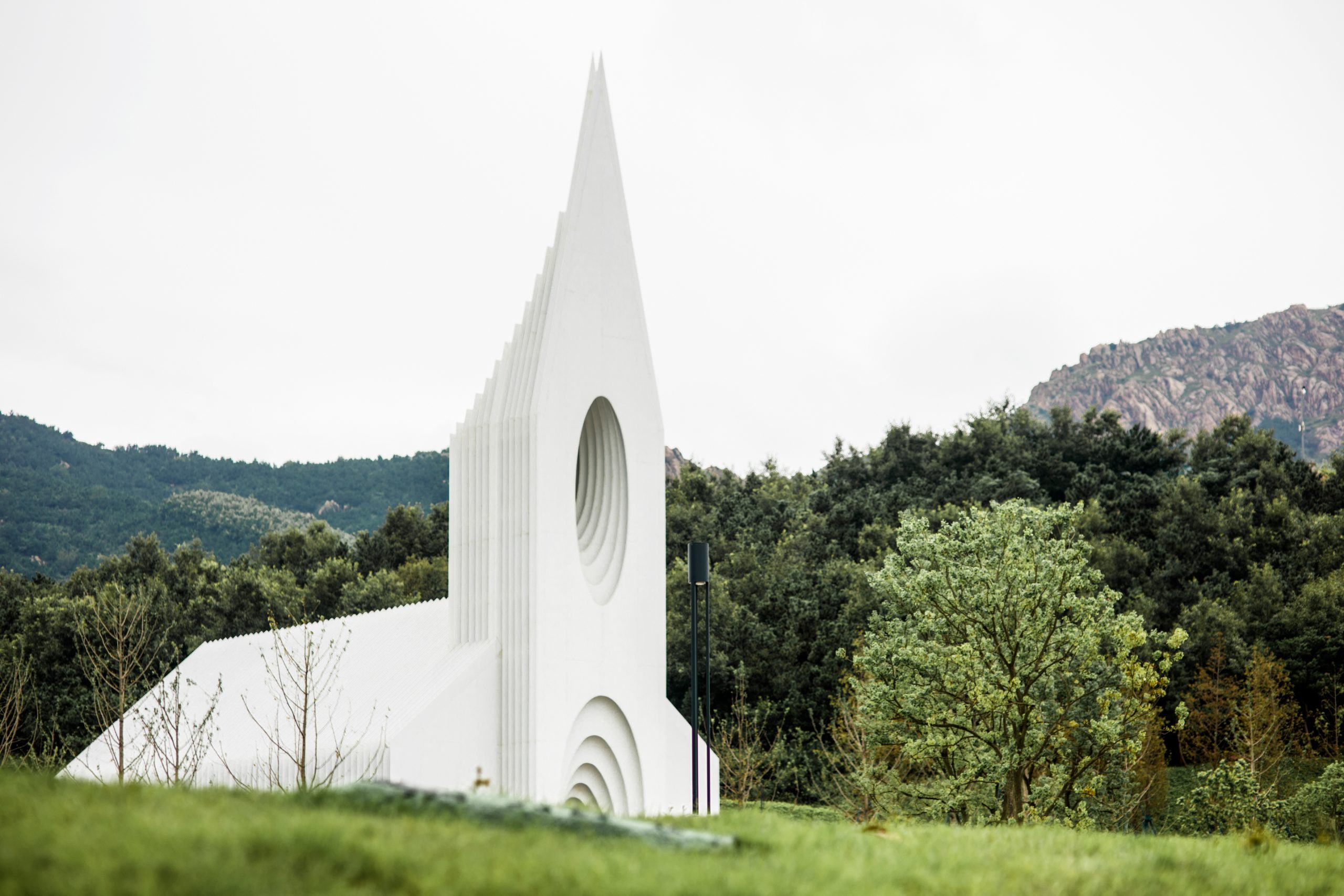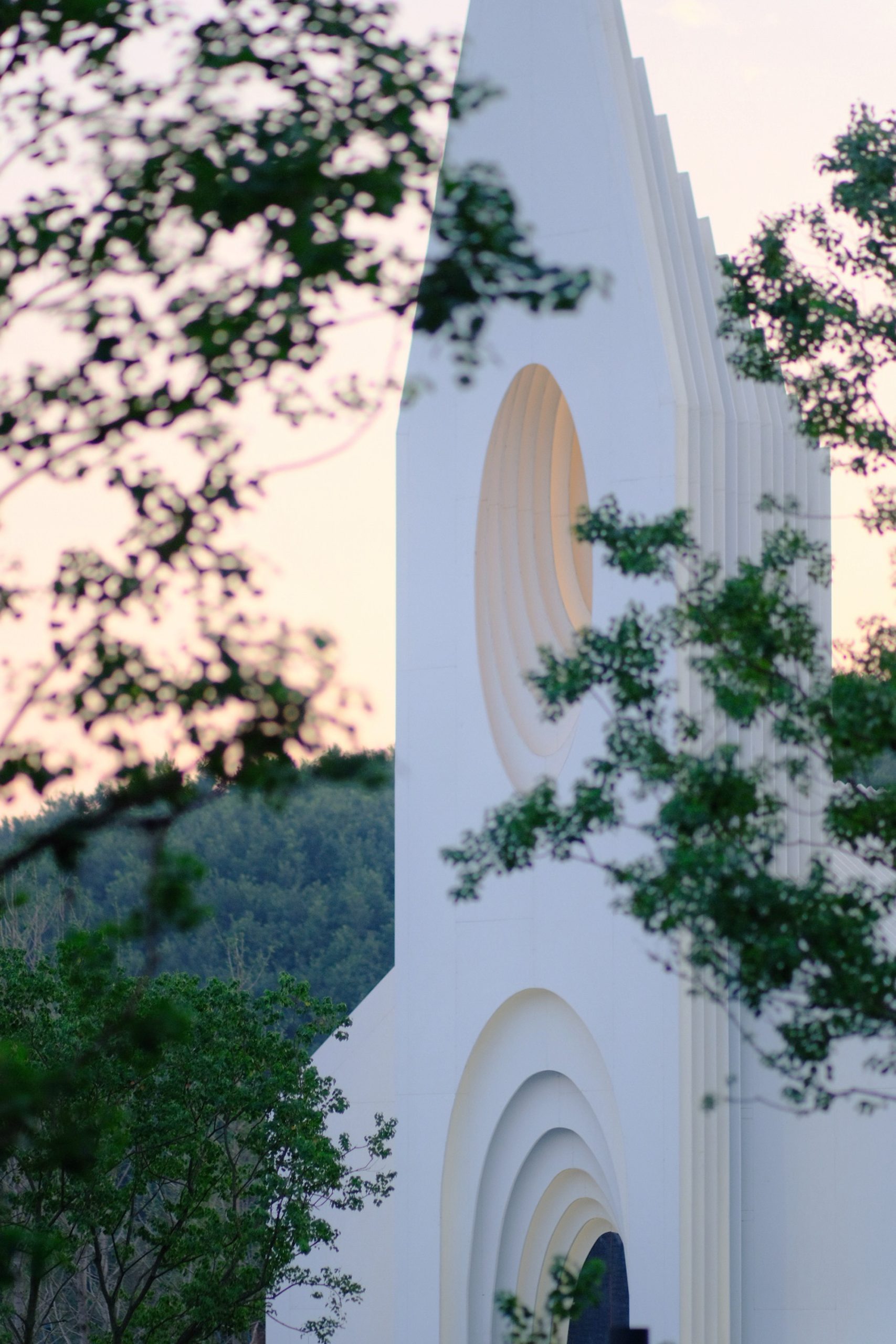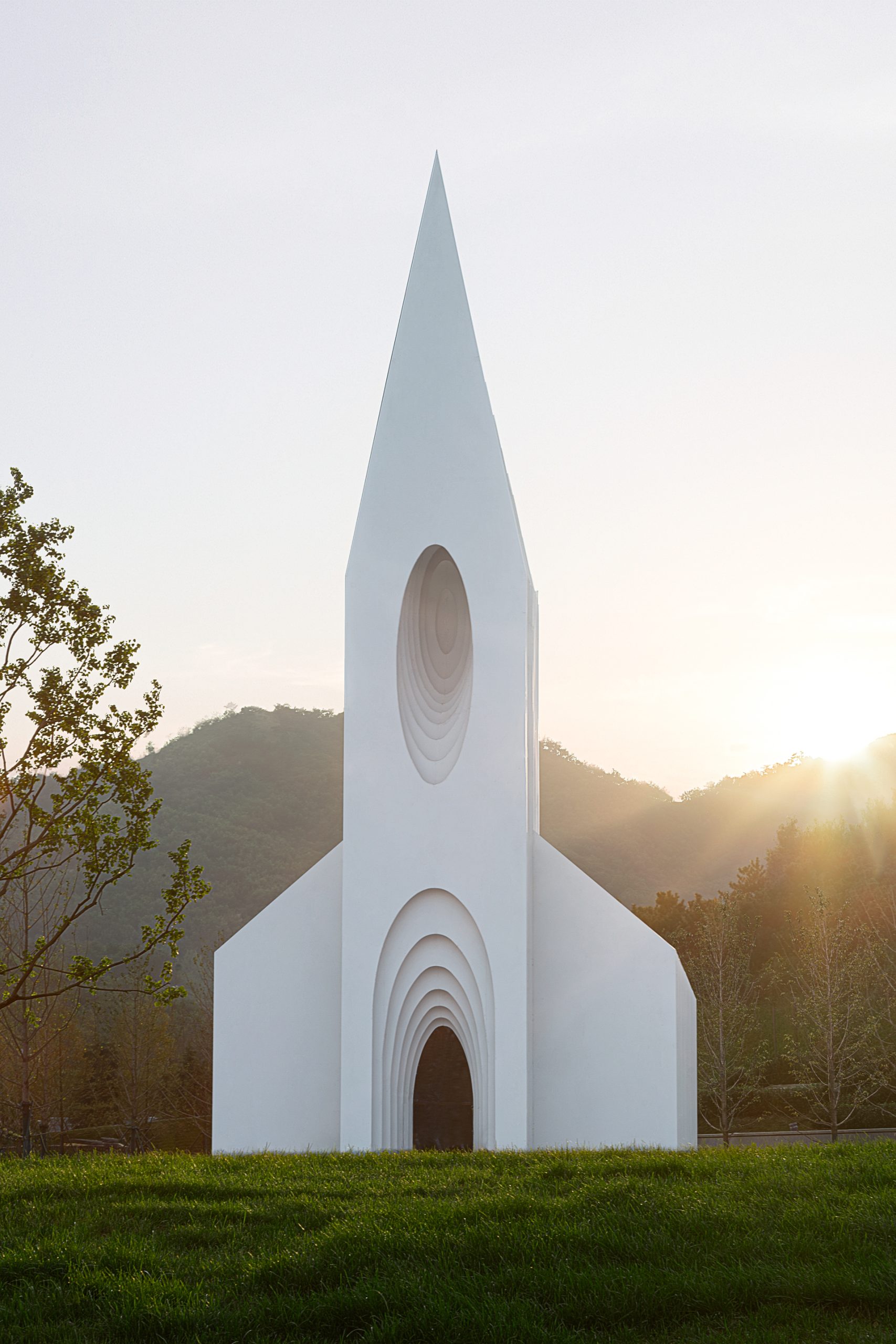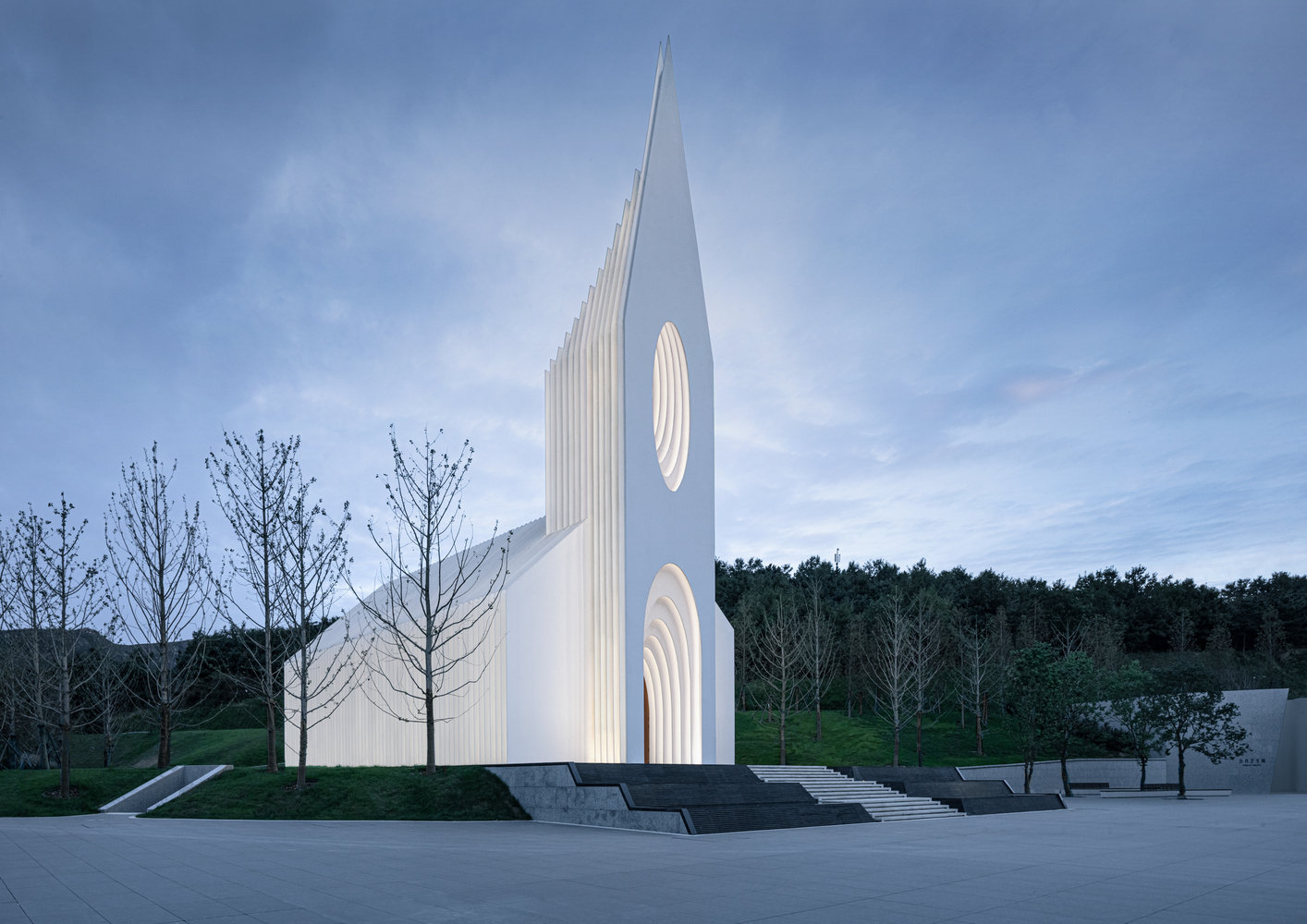
The Chamber Church / Büro Ziyu Zhuang
The Chamber Church in Qingdao, China, was completed by the German-Chinese architecture practice,Büro Ziyu Zhuang. The church boasts a unique and abstracted design. Its exterior features white metal fins that form a geometric and optical illusion effect. The visual experience combines religion with a secular attitude, as explained by the architects. It “aims to create a spatial container that both respects the past and looks towards the future.”
The Chamber Church aims to create a spatial container that both respects the past and looks towards the future. It shall provide a religious experience and secular touch. The lower part of the auditorium is divided into two parts: the semi-sunken space and the connected patio form a link to the surrounding landscape. It is embedded in the mountain and connected to the square. It is the hidden foundation on which the upper part of the auditorium can stand proud between the mountain and the water, reflecting the power of heaven and earth and spreading the gospel of creation. Looking backwards we find the archetypes of architectural associations in history. The design echoes the memories associated with them, but interprets them in a timeless modernity creating a sense of the future. The architecture integrates this duality in plan and section.
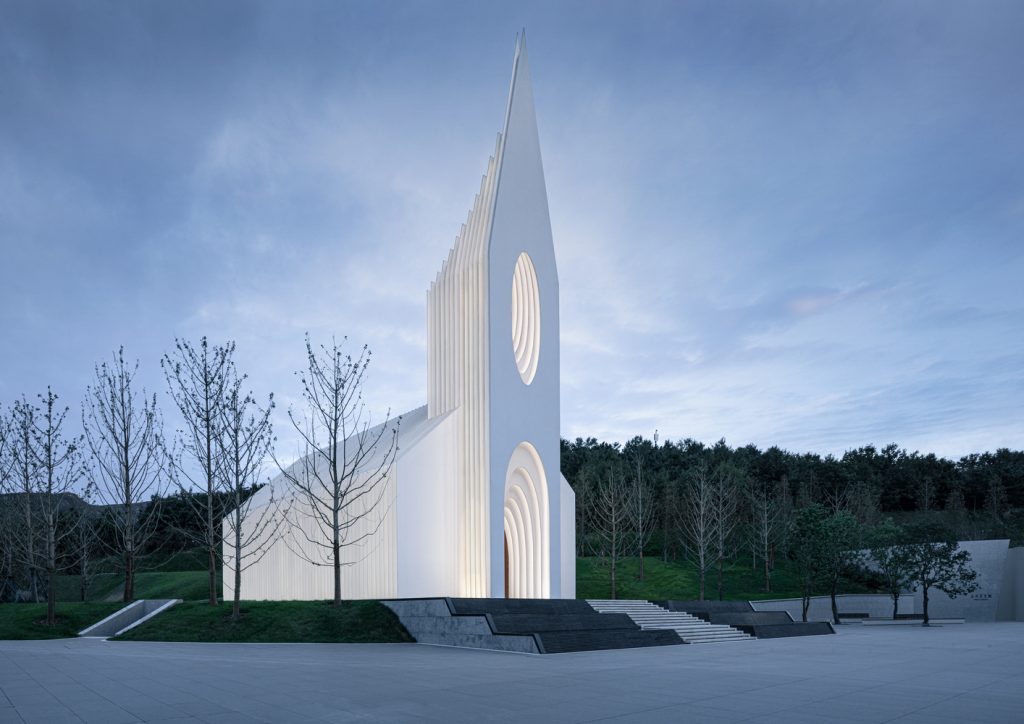
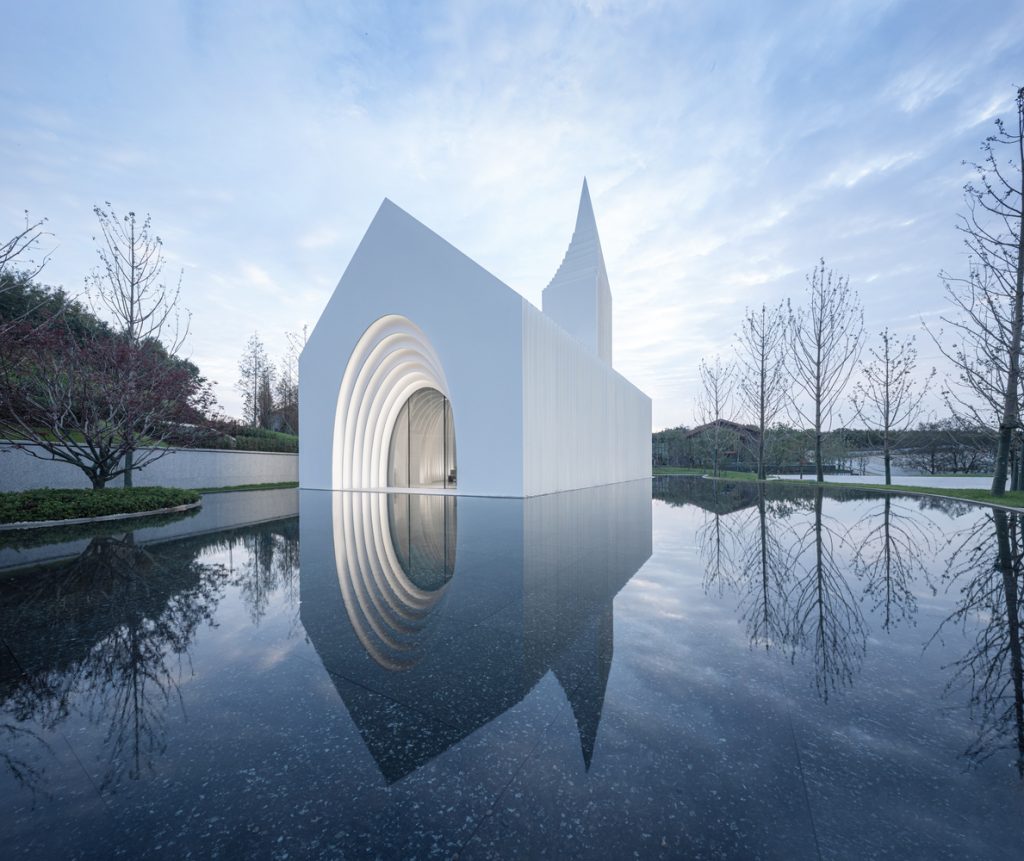
1) Prototype and Tradition
To create a modern icon, we needed to create a pure shape, that’s still evokes the archetype of a church. Therefore, during the design process, we integrated different vernacular façade images of traditional churchs. The derived base volume is then expressed through a series of slices. The created contour meets the expectation of client and visitors of the space`s first visual impression. The sequential slices are introduced in a pure and modern way, whilst the gaps of the façade create various visual effects depending on the angle of the observer. The derived prototype still features the classic components associated with a church, such as the bell tower with spire and rose window, the cascading interior arches, and the Basilica layout, but most of the decorative elements are abstracted – not out of an aversion or rebellion against ornament, but in order to reveal both the interaction of archetype and experiment, and the core issue associated with it: divinity and ritual.
Not only in sections and elevations, but also in plans, the building seeks to emulate its predecessors: the axial prolongation, the symmetrical layout, the stepped elevation, the progressive sectional rhythm, the implied basilica, these are all tributes to and an evolution from tradition. Emphasizing the traditional roots of the building and following that layout, the principal direction of the building is strictly east-west oriented. The topography changes its height at the front edge of the building, naturally dividing the surroundings into a plaza in front and a sloping landscape with a manmade lake behind the building.
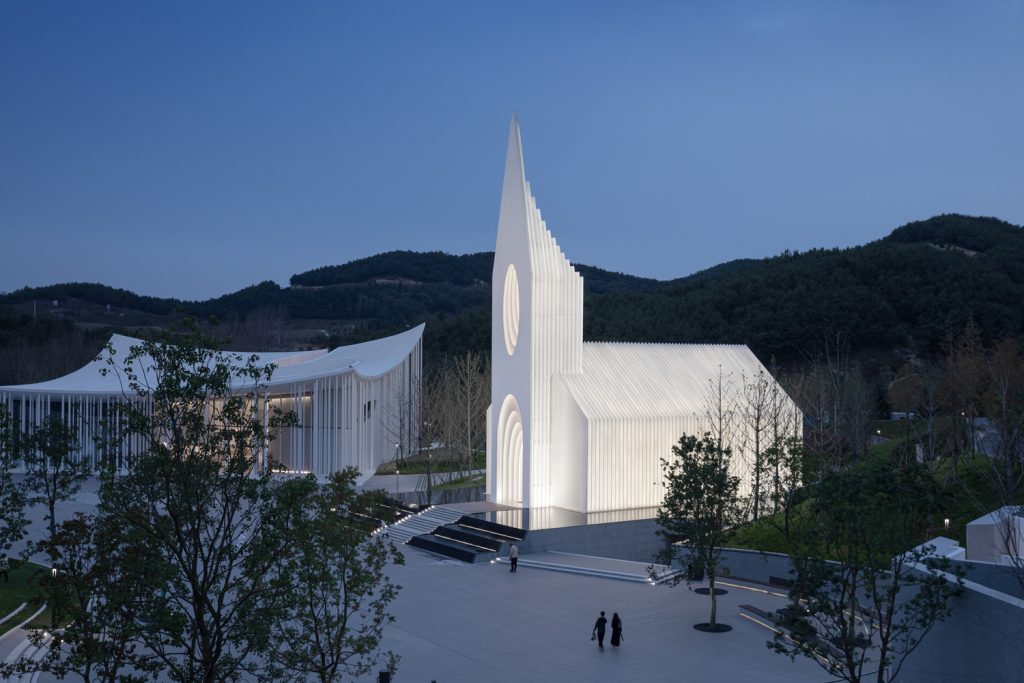
The landscape part of the exterior features an artificial lake to create privacy, while the open space of the plaza emphasizes the relation to the public. The change of height between building and plaza is bridged by large water feature steps. They form a visual base to further strengthen the sense of ritual and sanctity of the main hall. The lower part of the building serves as an auxiliary space for the main sanctuary, including the reception desk and preparation room. The path towards the main entrance of the church leads past the southern side to the western portal. An alternative access exists on the north western part of the plaza, where a direct connection to the VIP facilities in the base exists.

The back view seeks to break the rigid impression of the building edge, and forms a fluid connection to the lake. The strategically placed island creates a counterpoint to the central axis of the hall, diffusion the symmetric tension. The program favors a more inward-looking approach. Taking advantage of the series of landscapes slopes that block the view behind the calm lake we use that as a passive space to look at from inside the hall. In front of the church entrance, we create a “stage” to emphasize its central position.
2)Caves and Eternity
Before the advancement of construction technologies, caves were the first sheltered spaces for primitive humans, offering refuge from cold, wind, rain, sun and dangerous animals. Their encircling form is deeply embedded as a sign of security in humanities DNA. This sense of security was worshipped with the development of human civilization, which led to the early enshrinement of its origin, the cave, as a sacred place of ritual, such as the Caves of Lascaux (Grotte de Lascaux) or the Cave of Hilla (Jabal al- Nour). The cavernous space of the assembly hall thus attempts to give people a sense of peace and shelter in the form of an enclosure, just as the cave once did. It again provides a frame for the ritual and sacredness desired by the people holding the ceremony, thereby triggering a connection between the real and spiritual dimensions. The interior space of the assembly hall is a soft, flowing cavity that creates an interesting detachment from the sharp geometric exterior contours. Its construction creates at the same time a cavernous space and a bright ambience.

During the design process more references for the cavernous space became apparent. It can also be seen as a series of creations in nature: in addition to the caves that have sheltered humans for hundreds of thousands of years, the blue holes in the oceans, the exploding supernovas, the mother’s womb, all these series of existences have taken root in the depths of human consciousness, allowing us to further transcend form and speak to heaven and earth. The design subtracts a series of gentle curves that scale with the spatial sequence to form an introverted cavity. Its primary layout continues the traditional Basilica form, while at the same time having a strong sense of fluidity. This softness contrasts with the hardness of the exterior to create a visual interaction between the interior and exterior. The prototype of the cavity already exists in a number of projects. Setting this design apart from its predecessors is the balance between reality and fiction. In comparison to the Bruder Klaus Kapelle, where the void exists before, and therefor determines the building, the volume and void are in this case are in an equal relationship. Due to its construction, the longitudinal section is added a grayscale, which increases the possibility of light and shadow intervention, while isolating from the traditional cavernous space with a continuous slice method.
3) Light and Slices
The entire building is sliced at uniform intervals along the longitudinal axis. The created gaps allow the light to enter. As it passes between the white slices, it reflects back and forth between them and then spreads evenly and softly into the interior. Throughout the day, the changing angle of the sun and its relation to the gaps and interfaces create varying visual effects. The play between direct and reflected light gives the “cave” a sense of divinity and elation. The intention behind the cave is to form a space of shelter and of spirituality. An Intention best conveyed in Leonardo da Vinci’s famous painting “Virgin of the Rock”, where in a sheltered space of pure light, one can feel the love of creation for all beings. The softly curved interior follows a traditional basilica layout with a more contemporary interpretation.
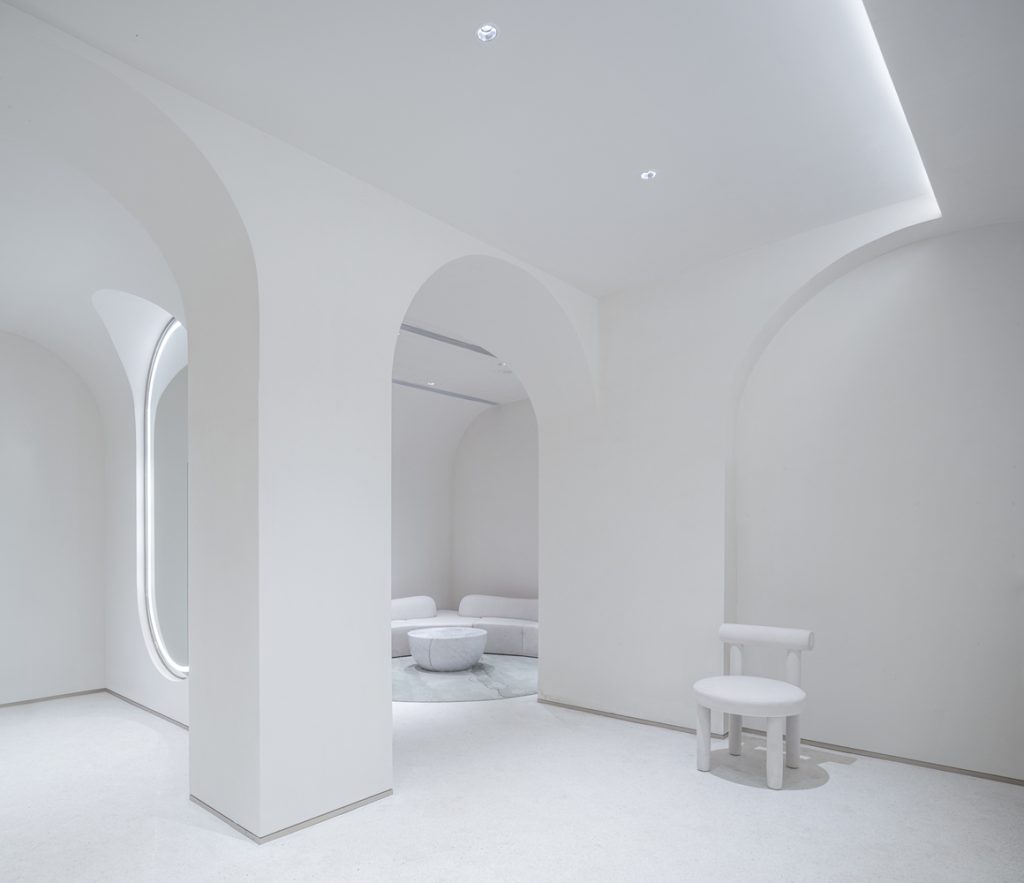
The remaining blades after the substraction of the inner and outer contours allow the building to be softly lit at night, and offering passers-by to feel the sacred light emanating from within. The form is constituted in a unique way: a series of aluminum (outside) and GRG (inside) slices arranged vertically, each 5 cm thick, with a gap of 40 cm between each slice. All these slices are combined to form the entire wall, roof and tower. The cascading white slices soften the interior light while wrapping the main frame and construction system of the building, giving the entire assembly a concise and austere atmosphere, which is both a contemporary aesthetic tendency and an echo of tradition – a fusion of heritage and contemporaneity. In this setting the observer defines his experience: The look forward to the congregation closes the slices and emphasises the void of the cavern and the unity of the people gathered. The look towards the skies is unobstructed at every place in the hall and connects the individual to nature and heavens, resulting in an archaic form of modernity.
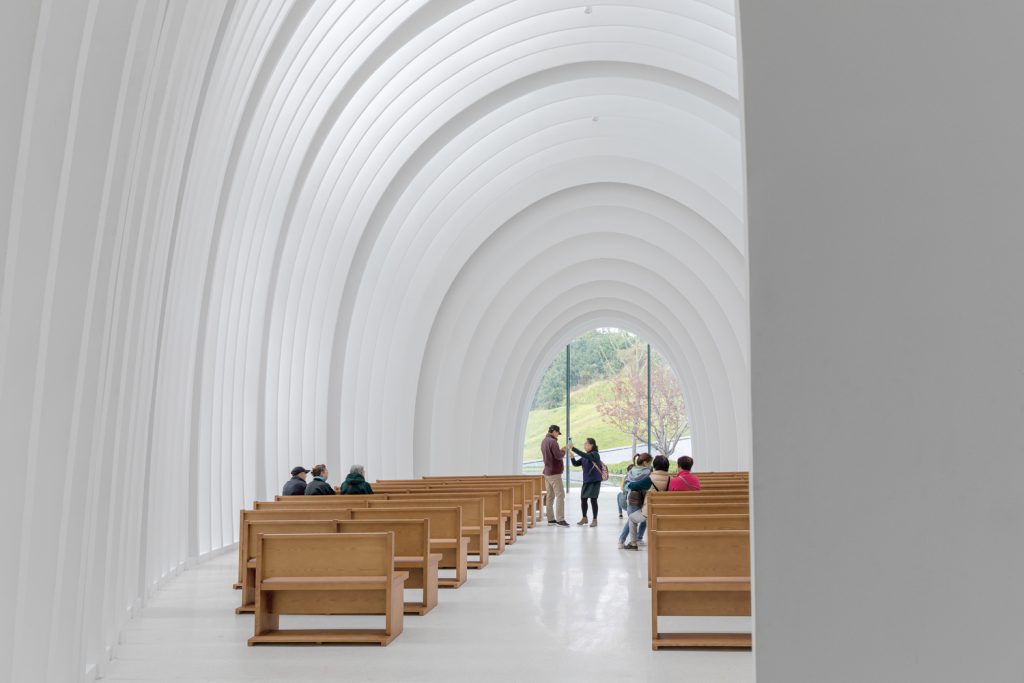
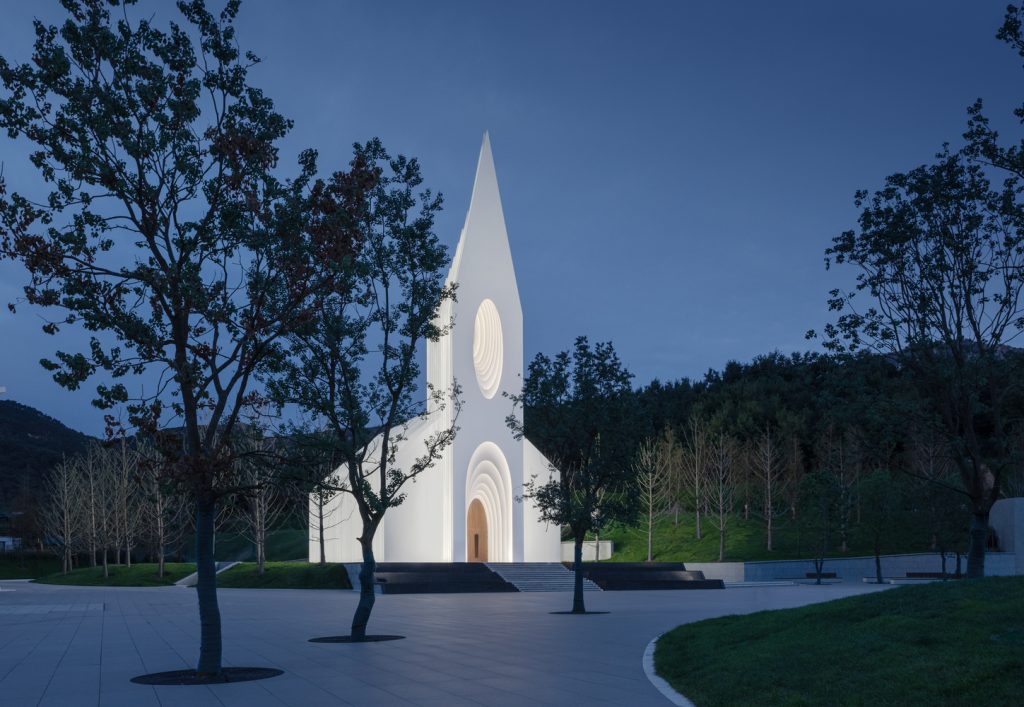
- Floor Area: 770.91 sqm
- Architectural and Interior Design: BUZZ/Büro Ziyu Zhuang
- Principal Designer: Ziyu Zhuang, Fanshi Yu, Fabian Wieser, Na Li
- Design Team: Mengzhao Xing, Jialin Song, Yingliu (Intern), Yi Liu, Dongdong Chen, Weihong Dong, Yubing Chen, Zhendong Chen, Di Tian, Ruoyi Song, Nan Zhou (Intern), Lingwei Meng (Intern)
- Construction Drawings: Qingdao Tengyuan Design Institute Co., Ltd.
- Construction: Qingdao Jiuan Construction Groups
- Interior Construction Drawings: Gold Mantis Construction Decoration
- Interior Construction: Ganghua International
- Landscape Design: ASPECT Studios
- Landscape Construction: Guangzhou Yayue Landscape Construction Co., Ltd
- Structure Consultant: Hejie Architectural Consultant
- Lighting Consultant: Puri Lighting Desgin

